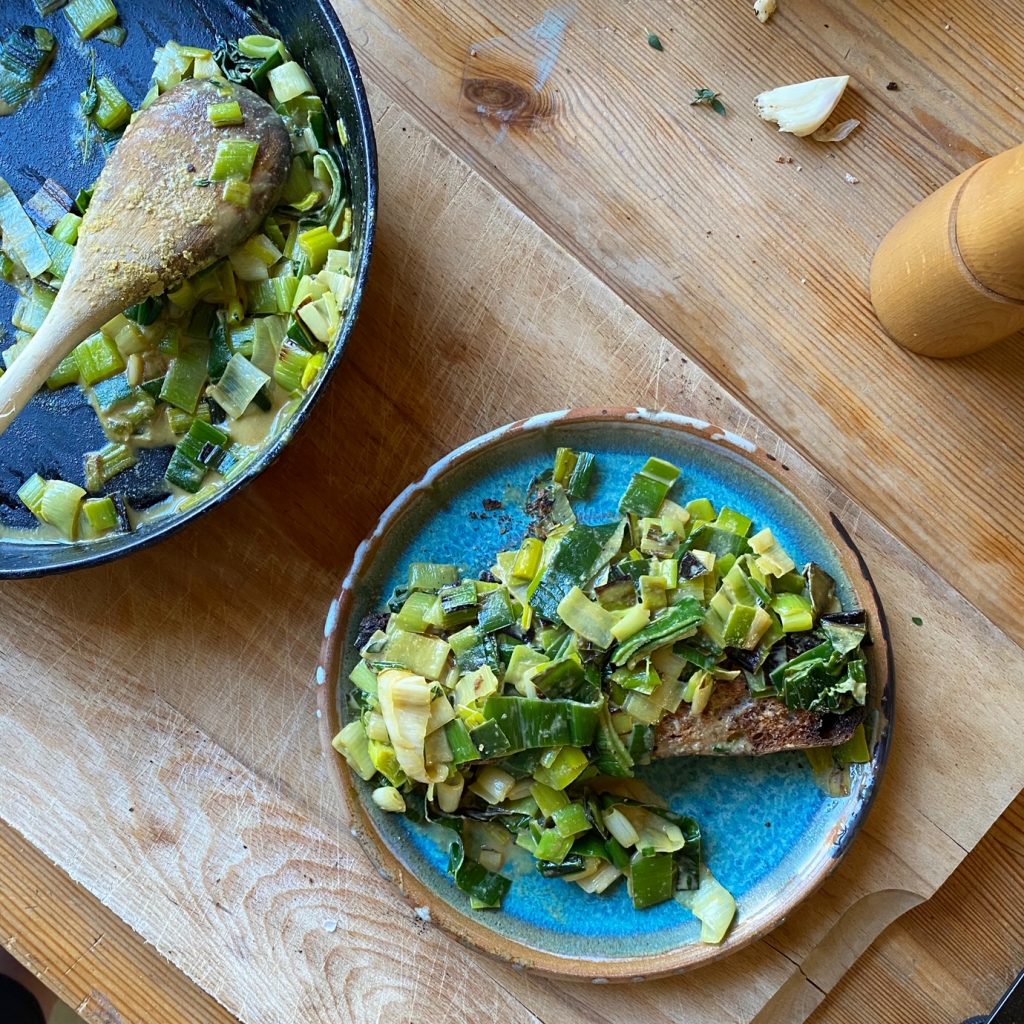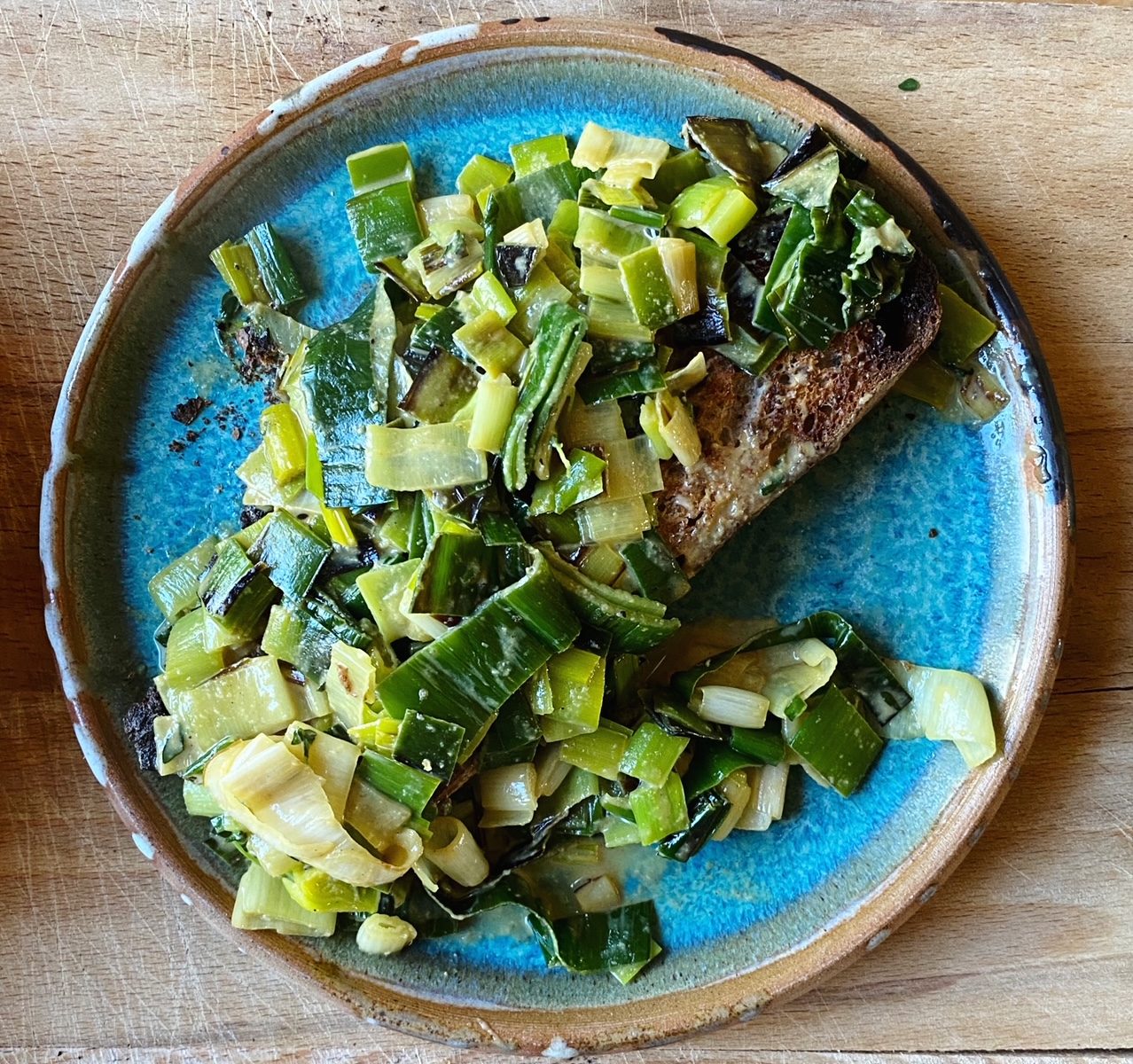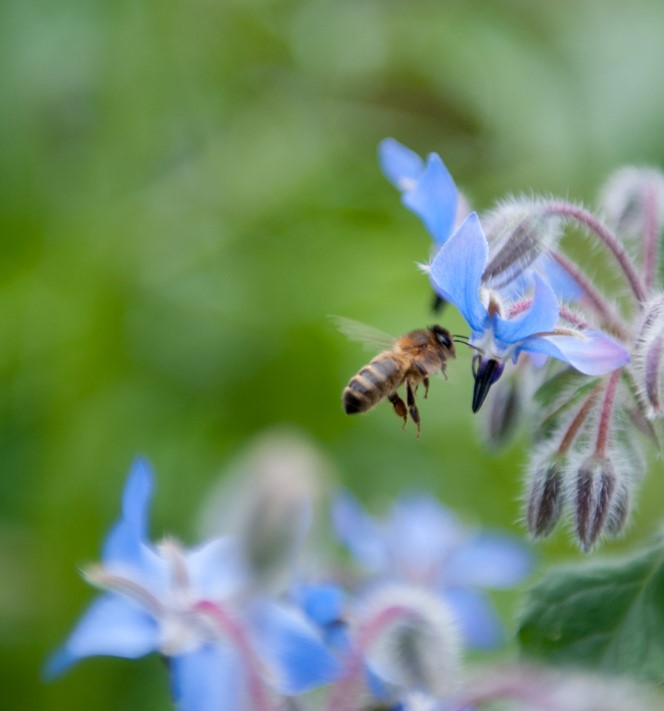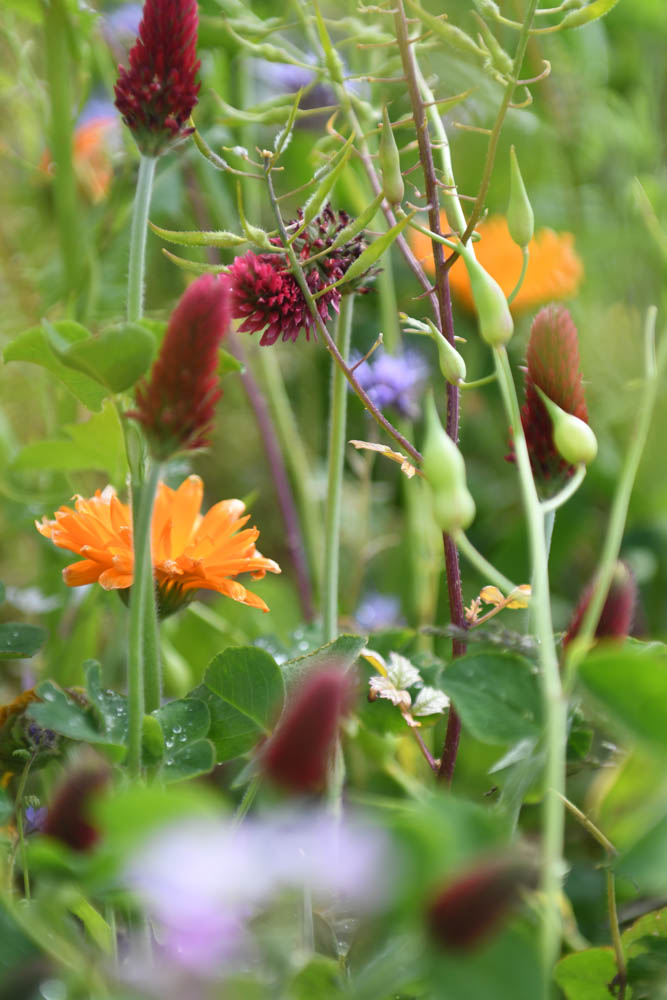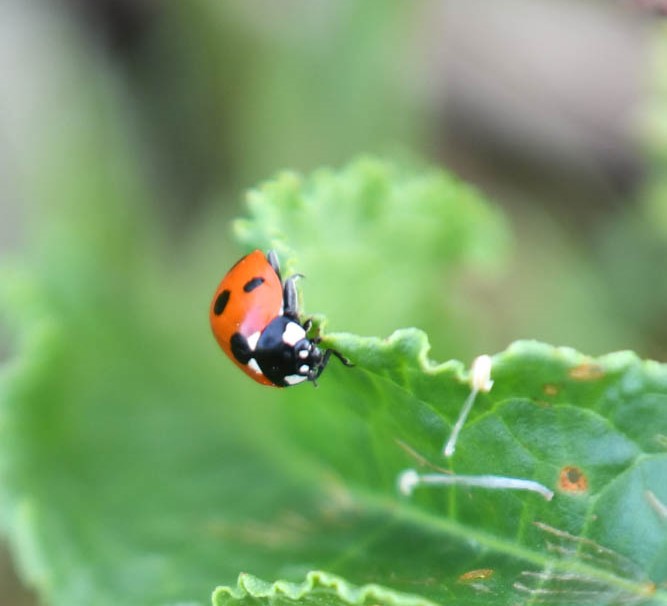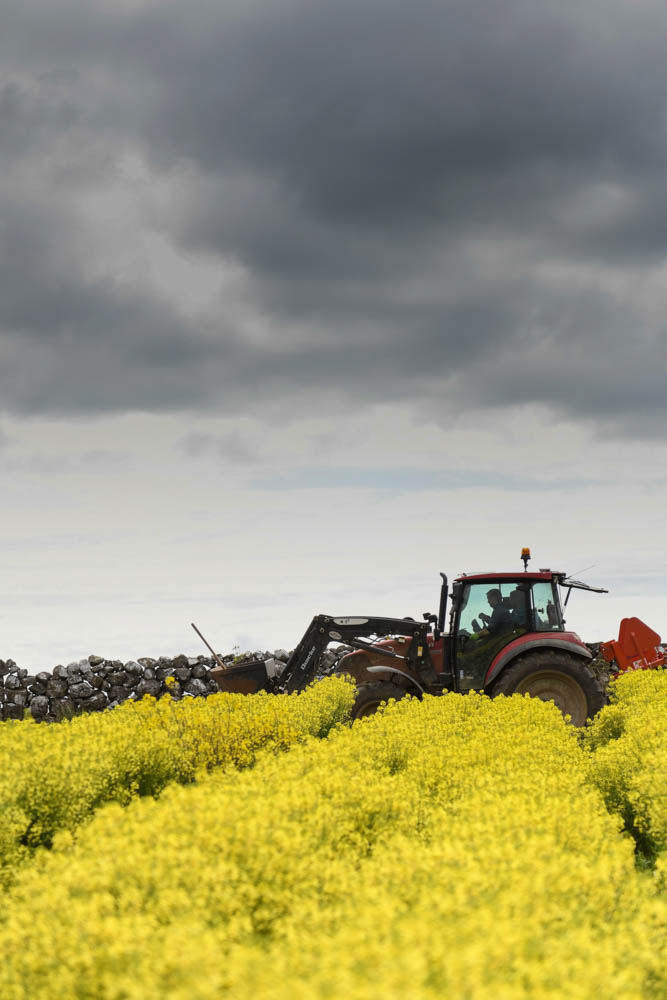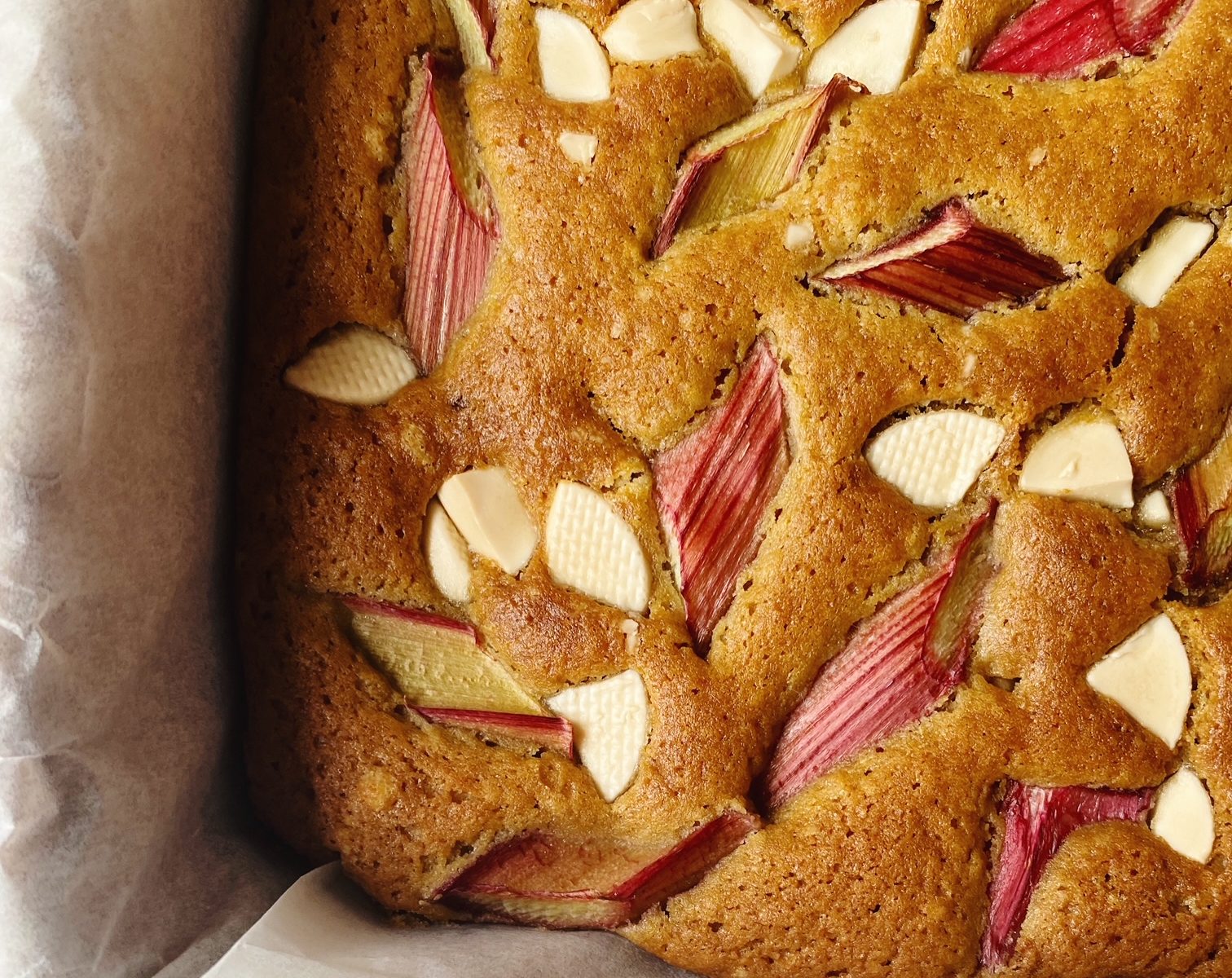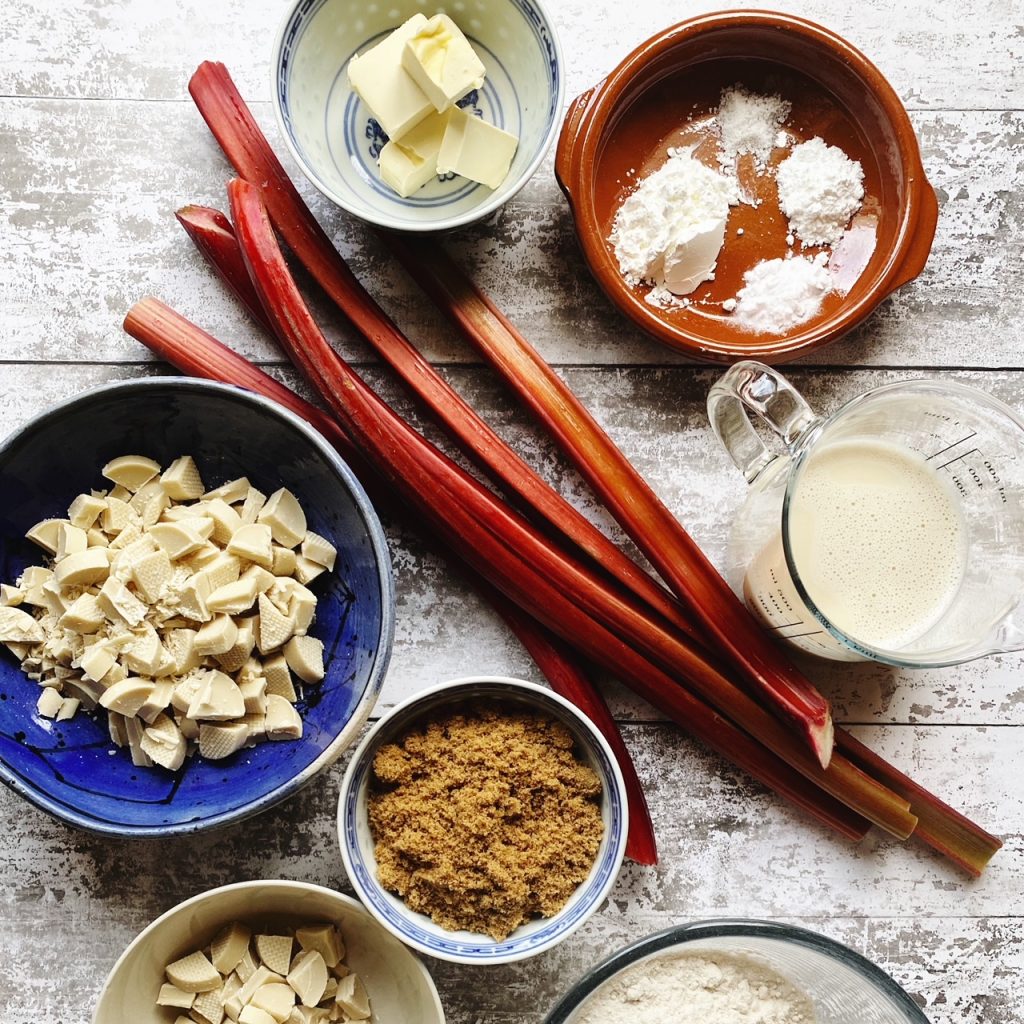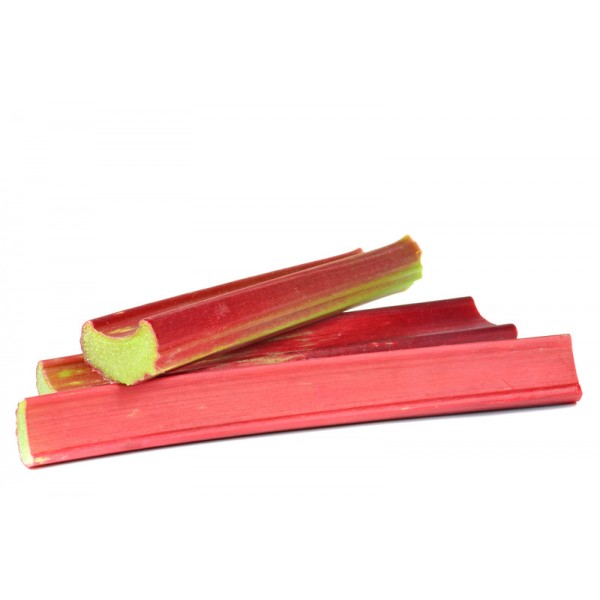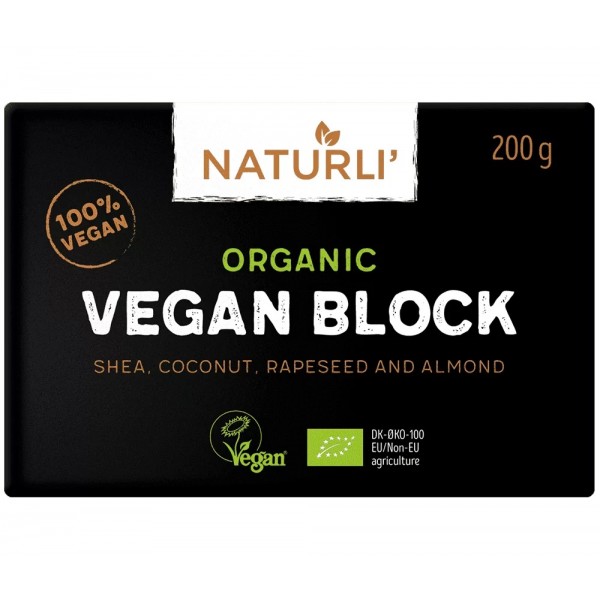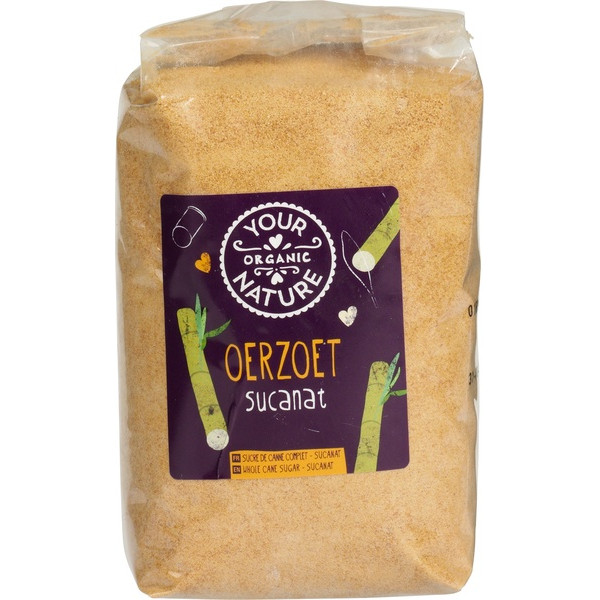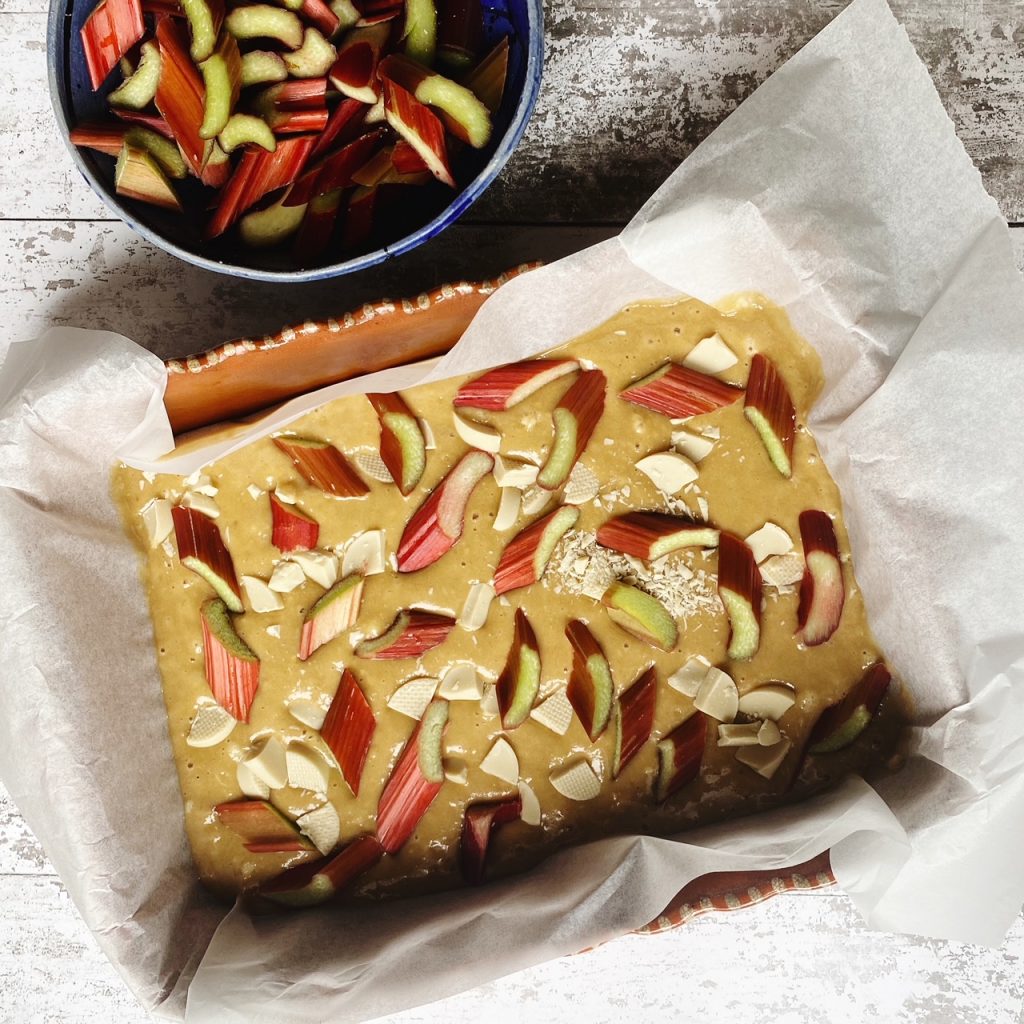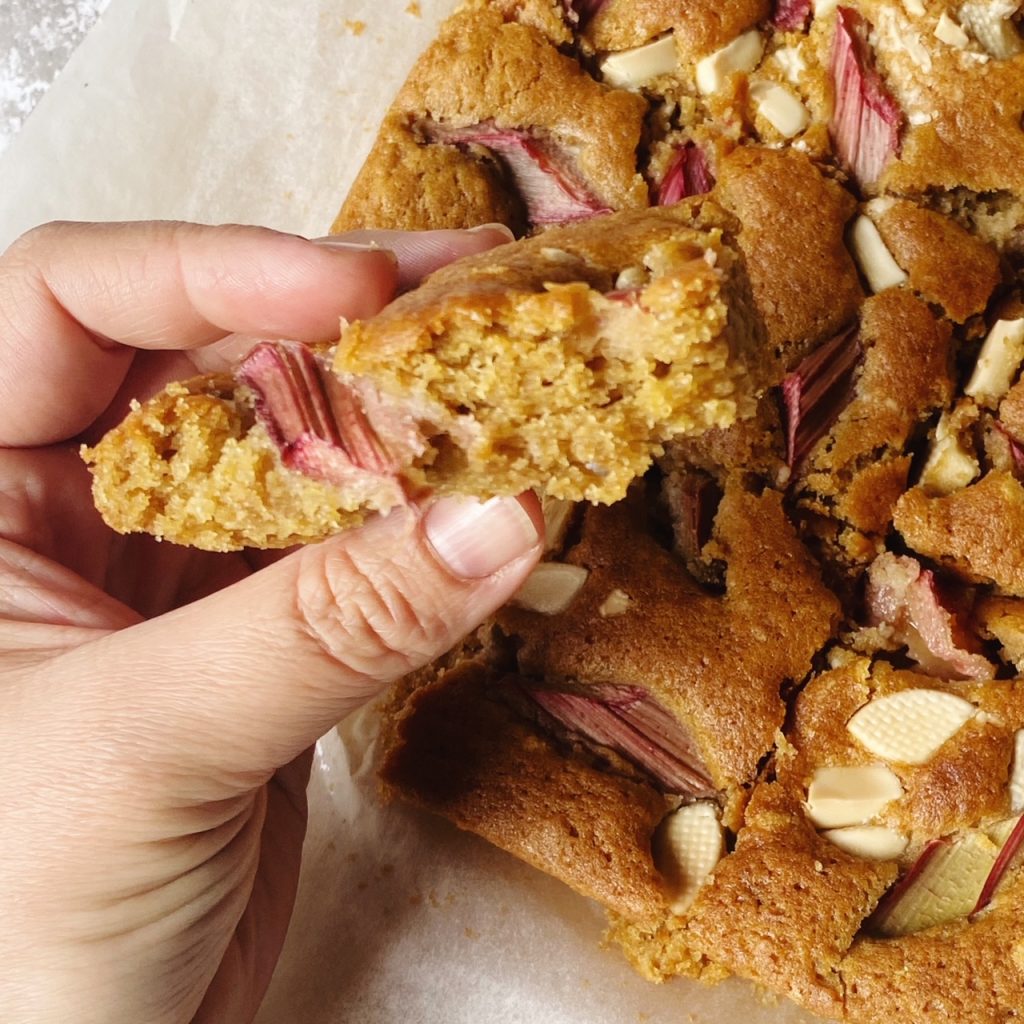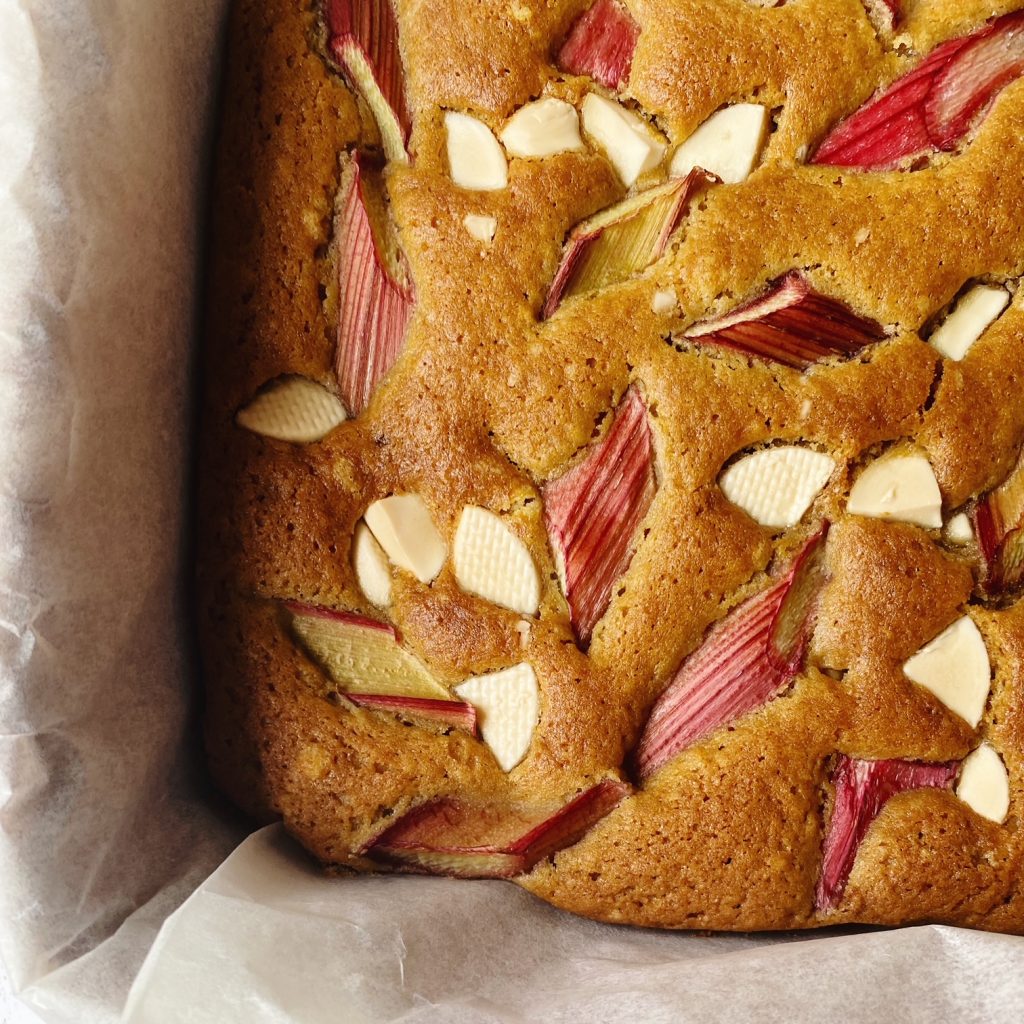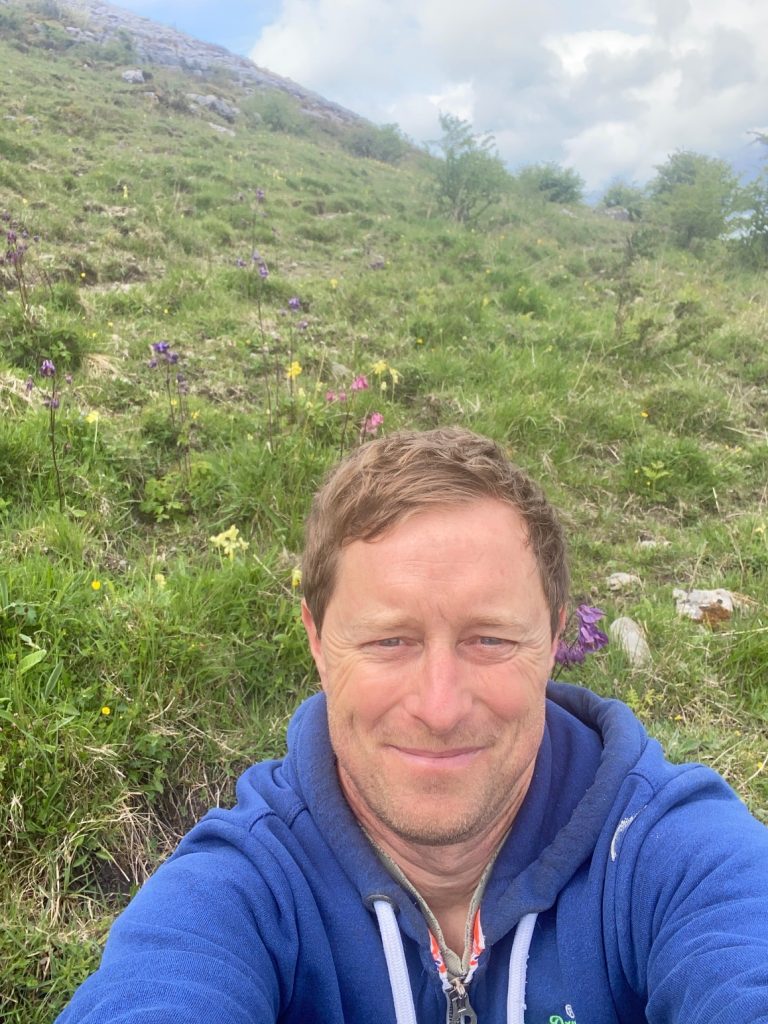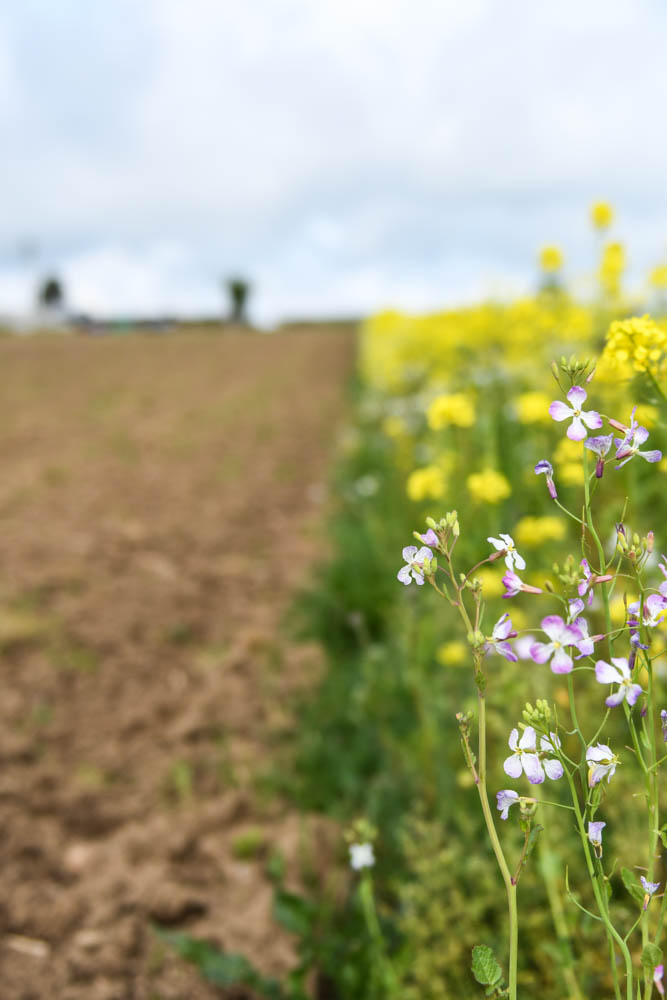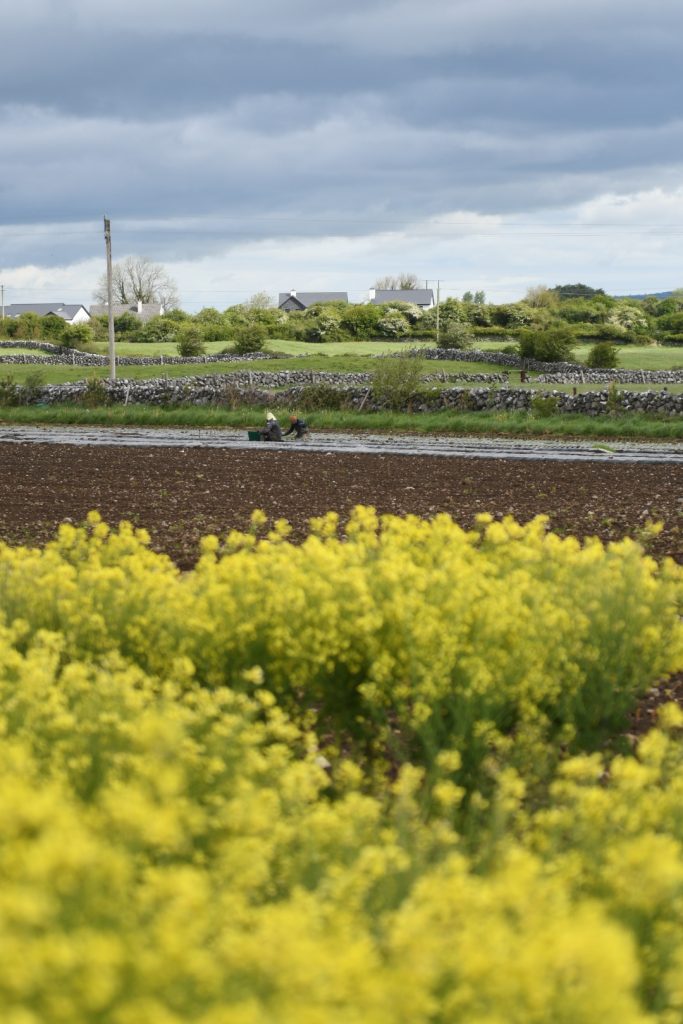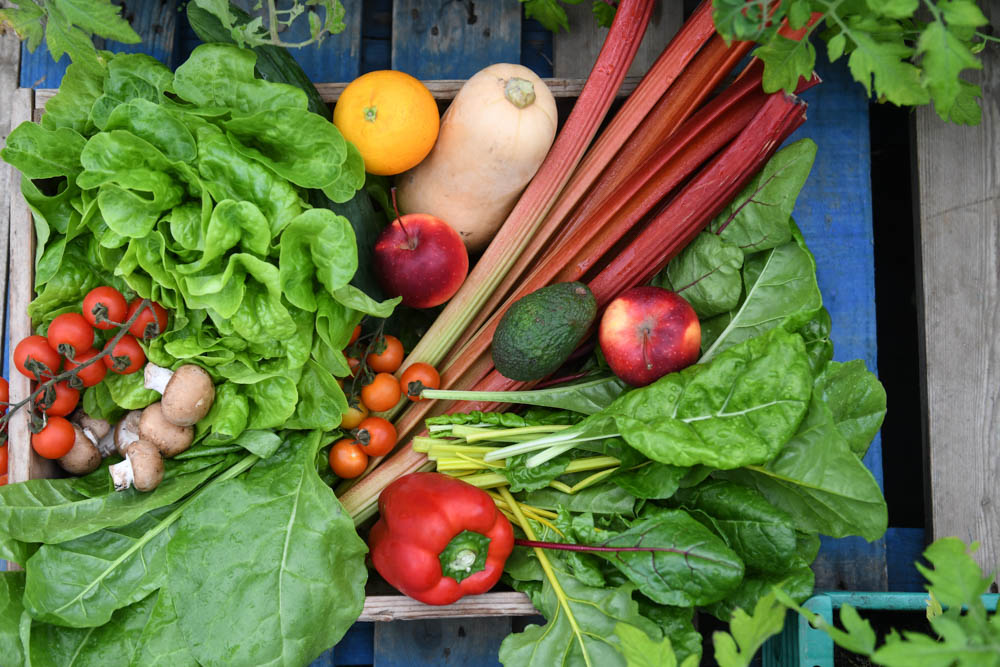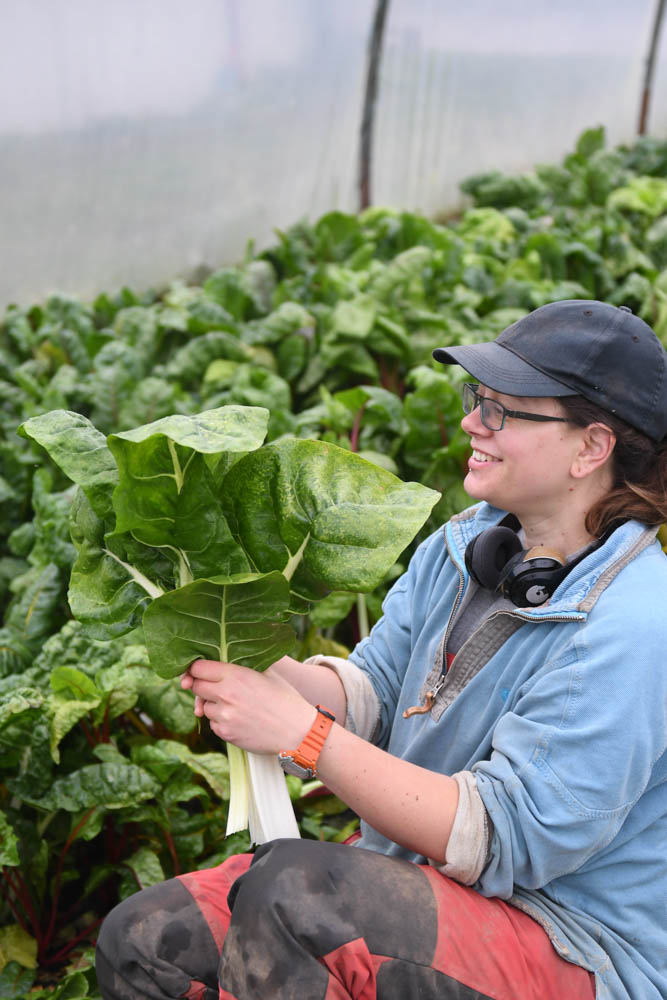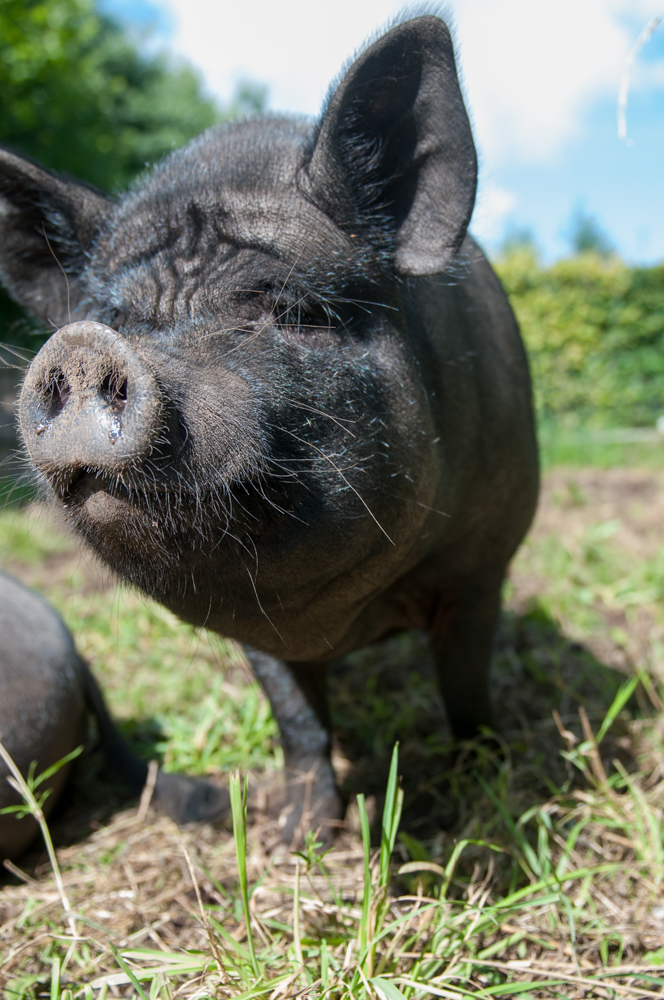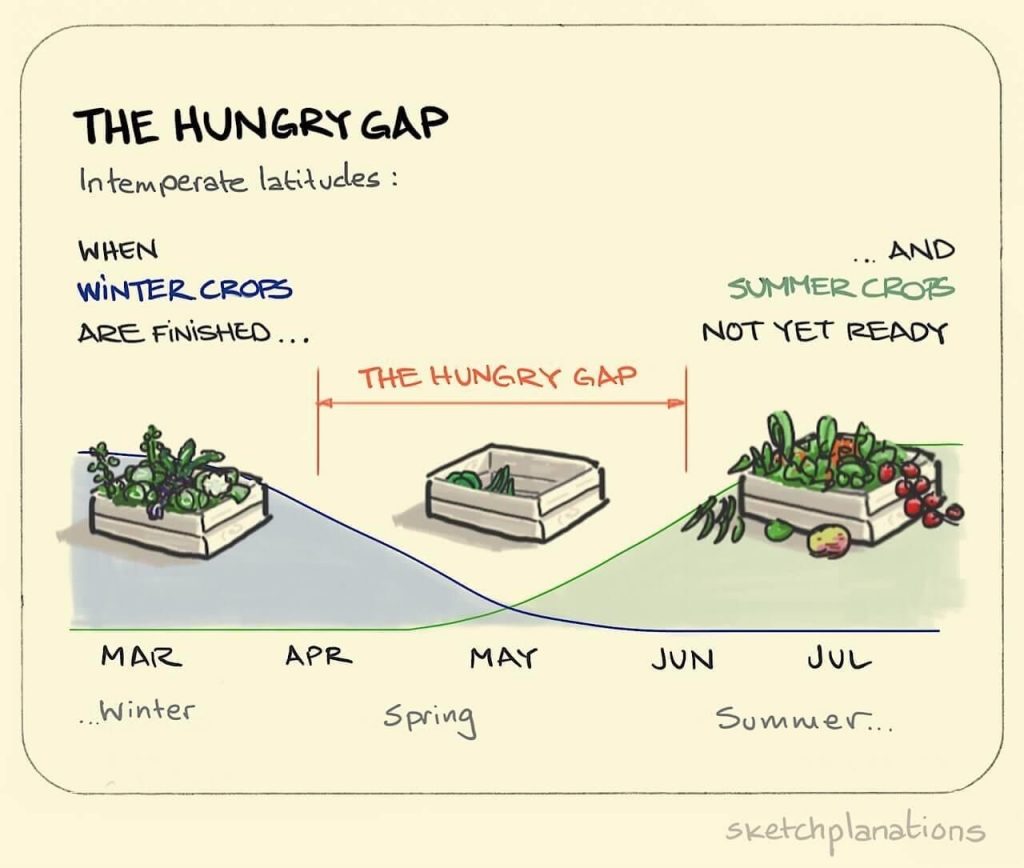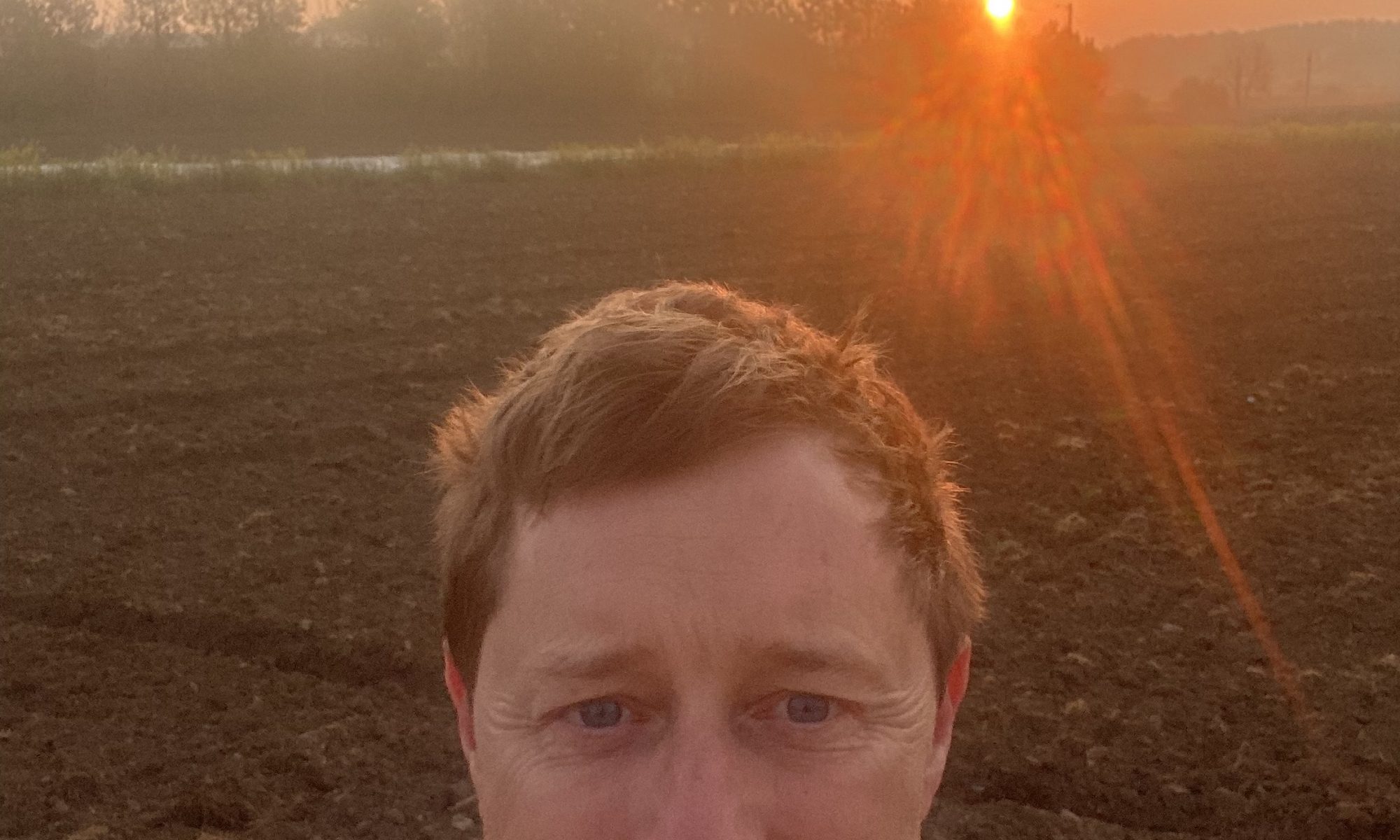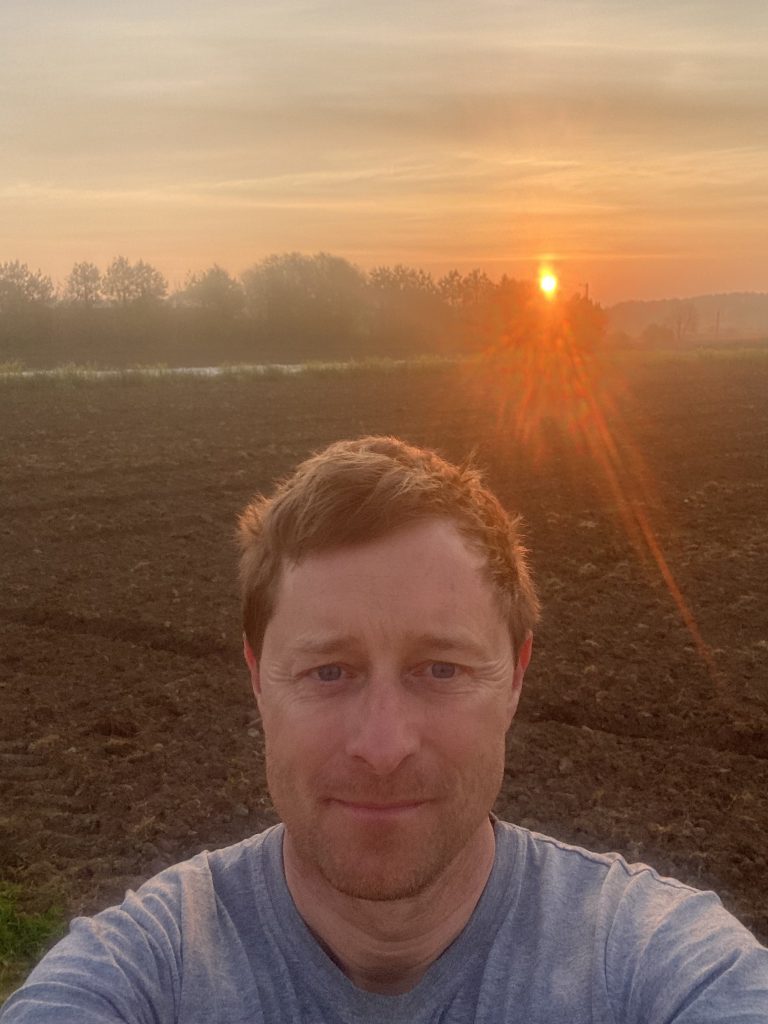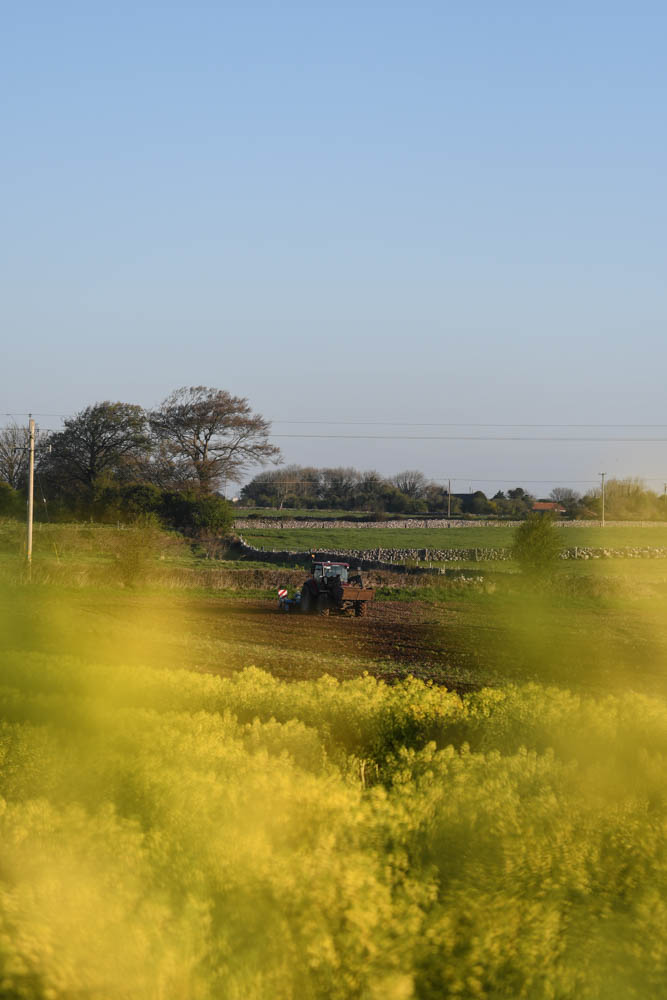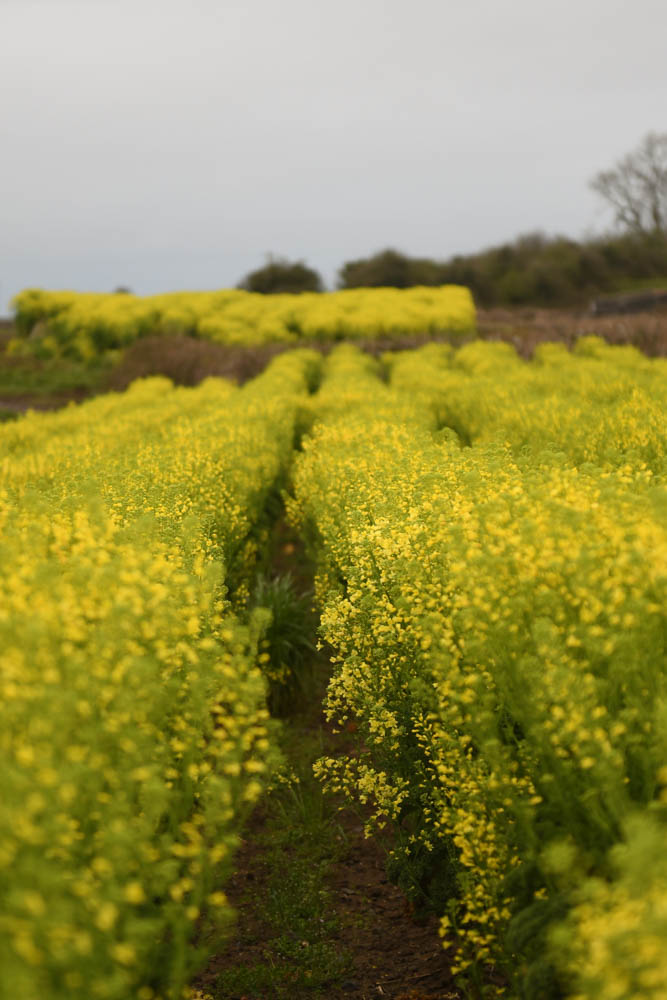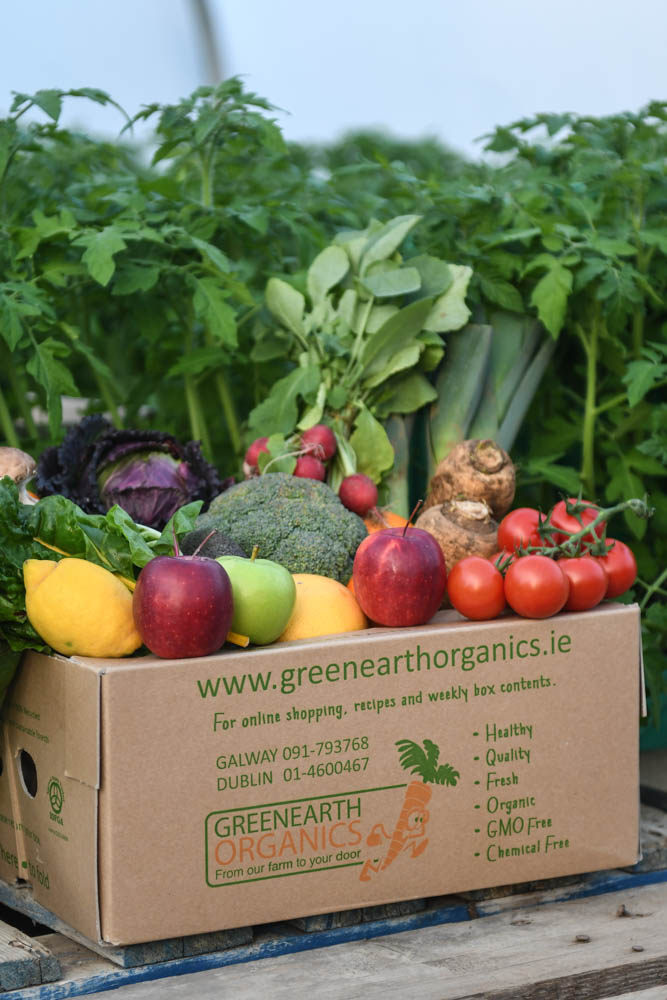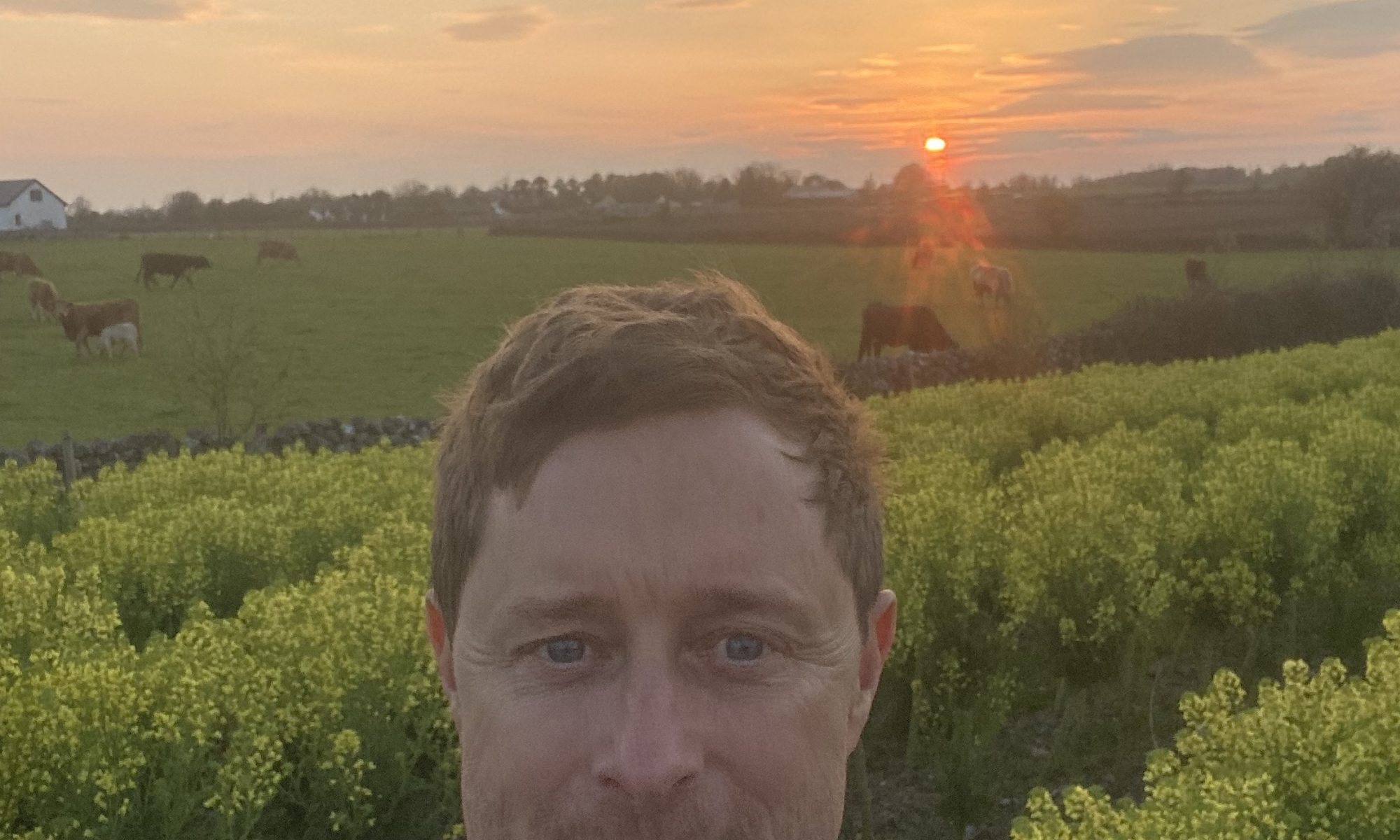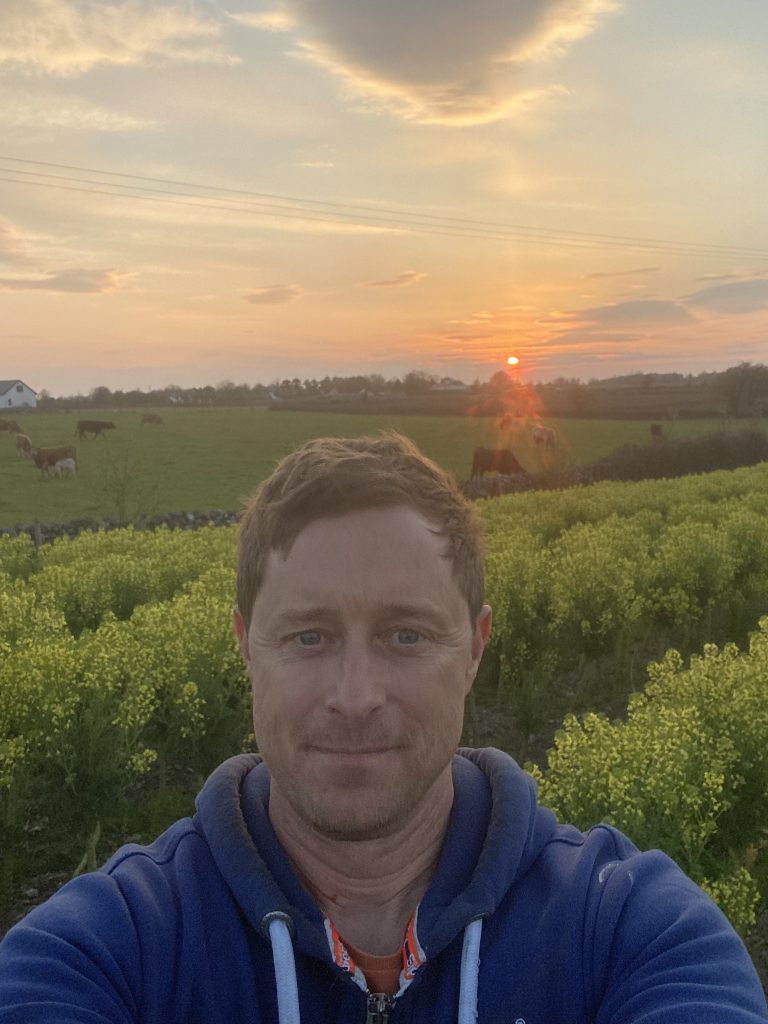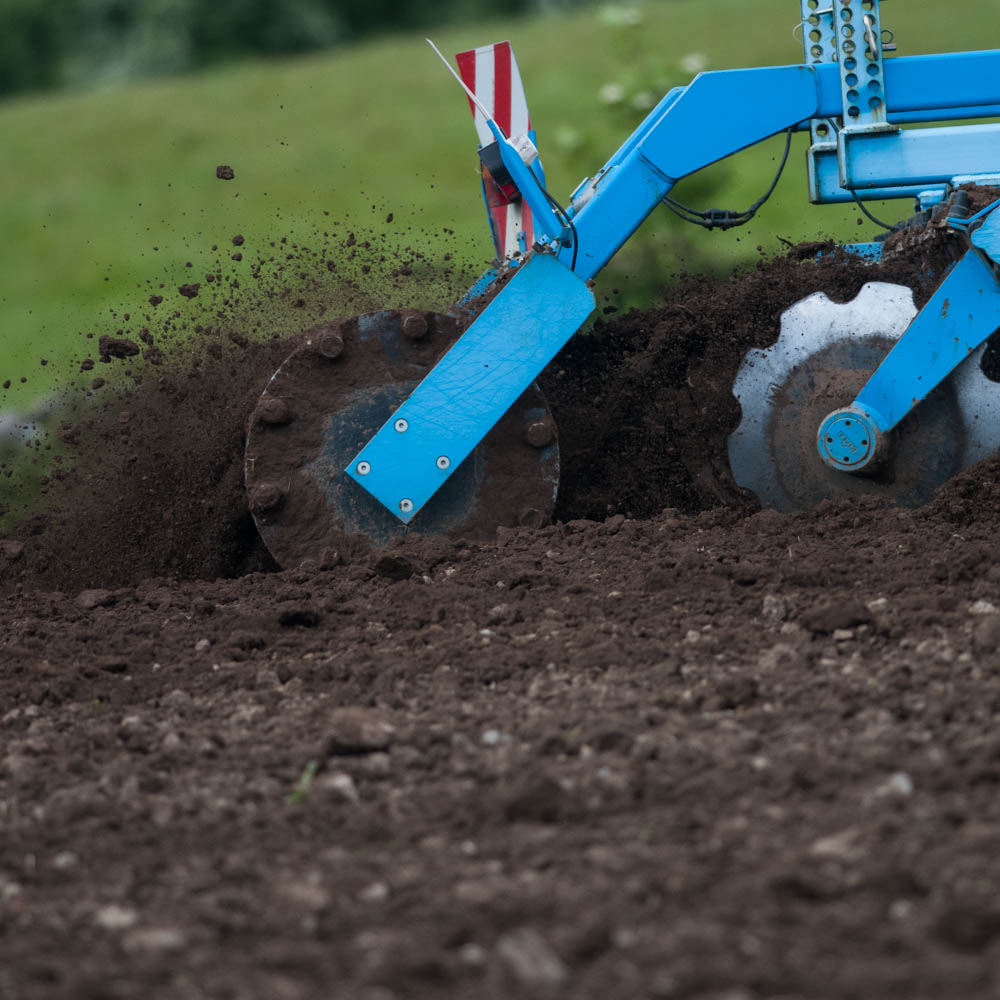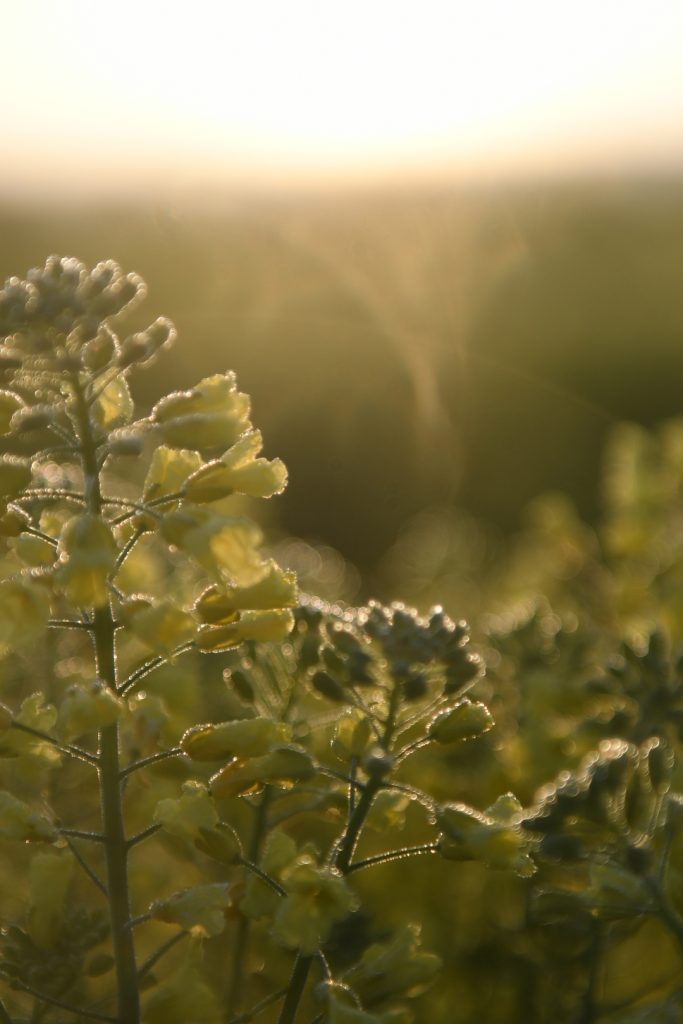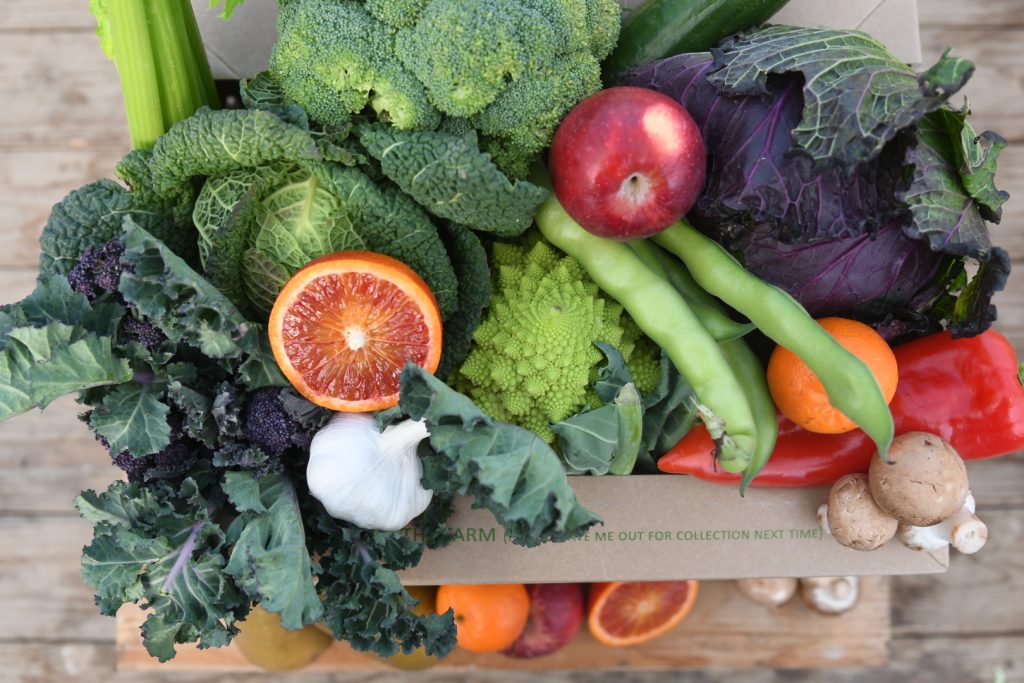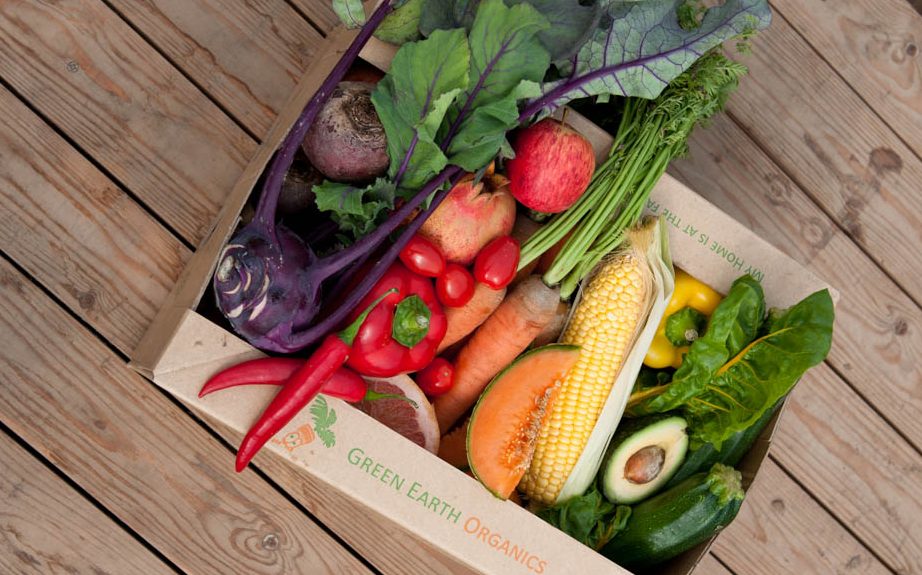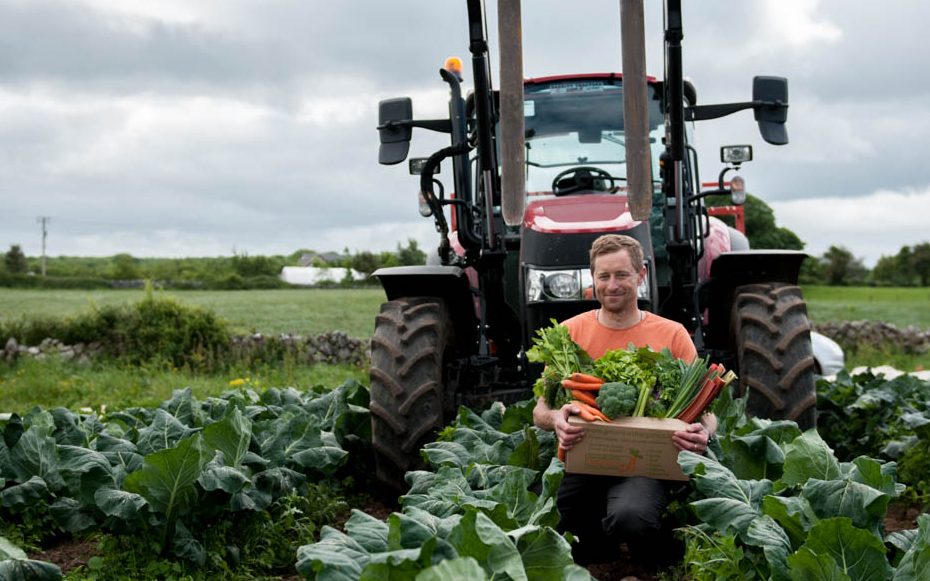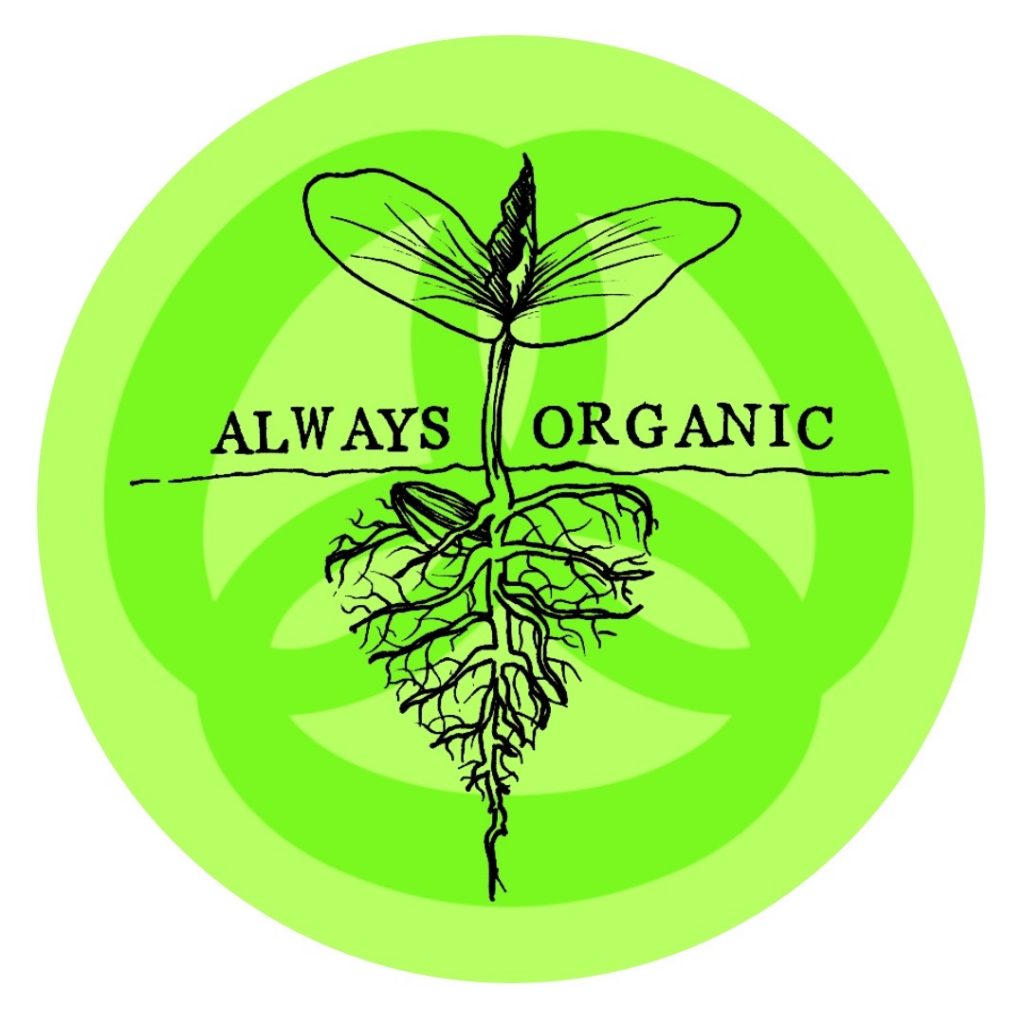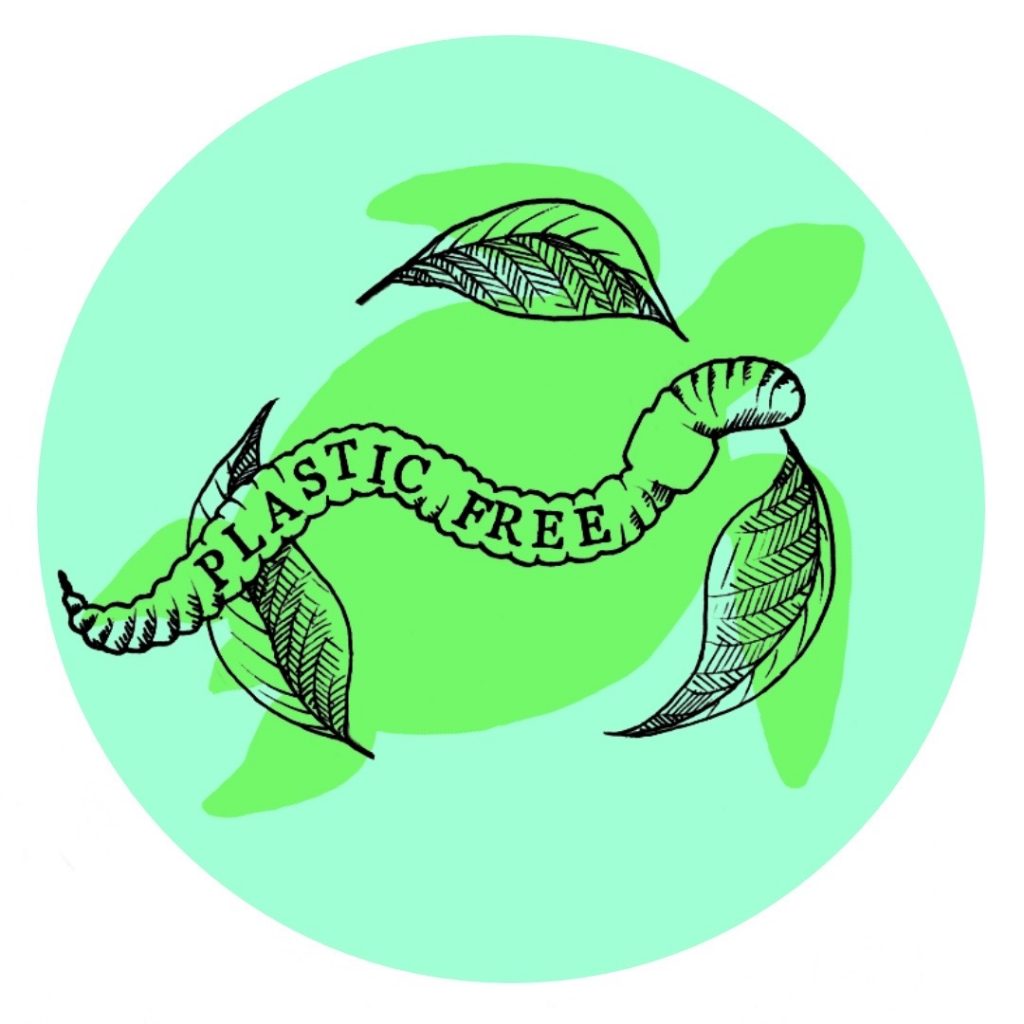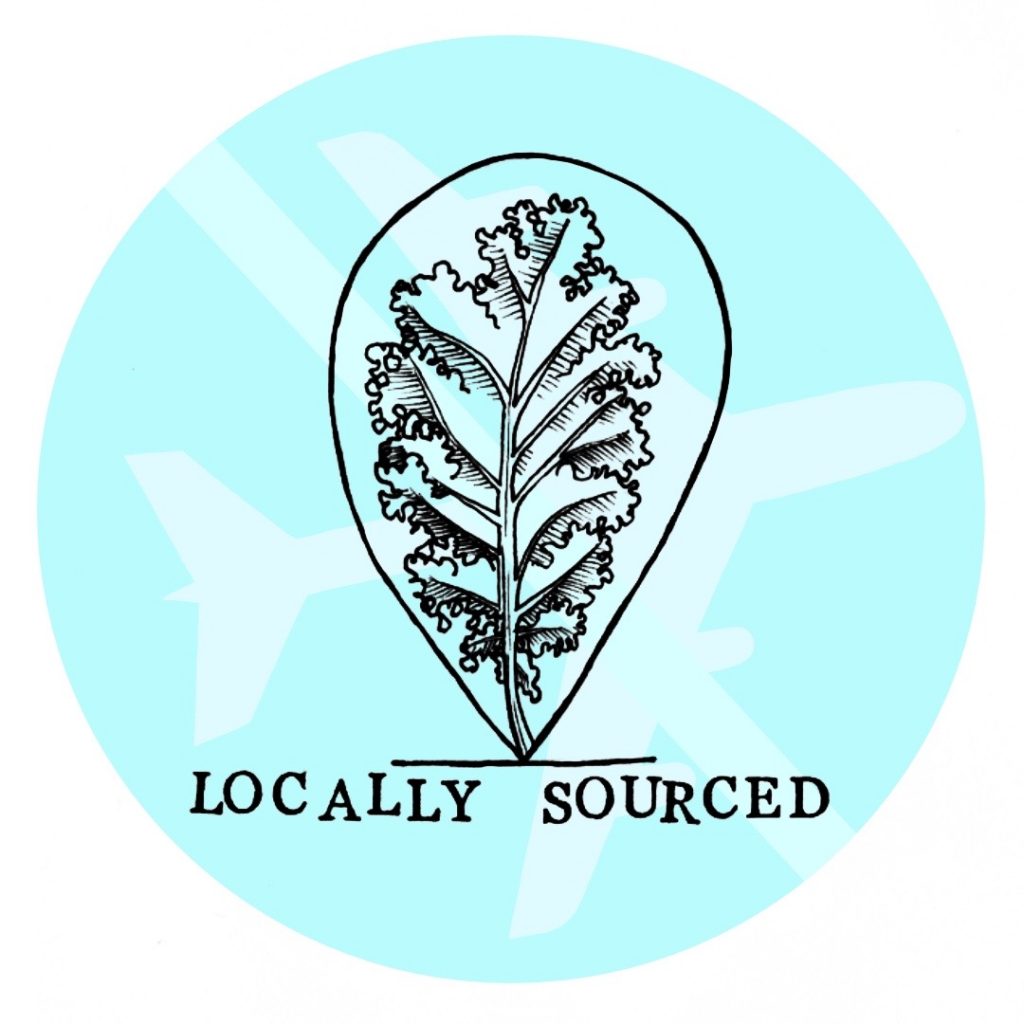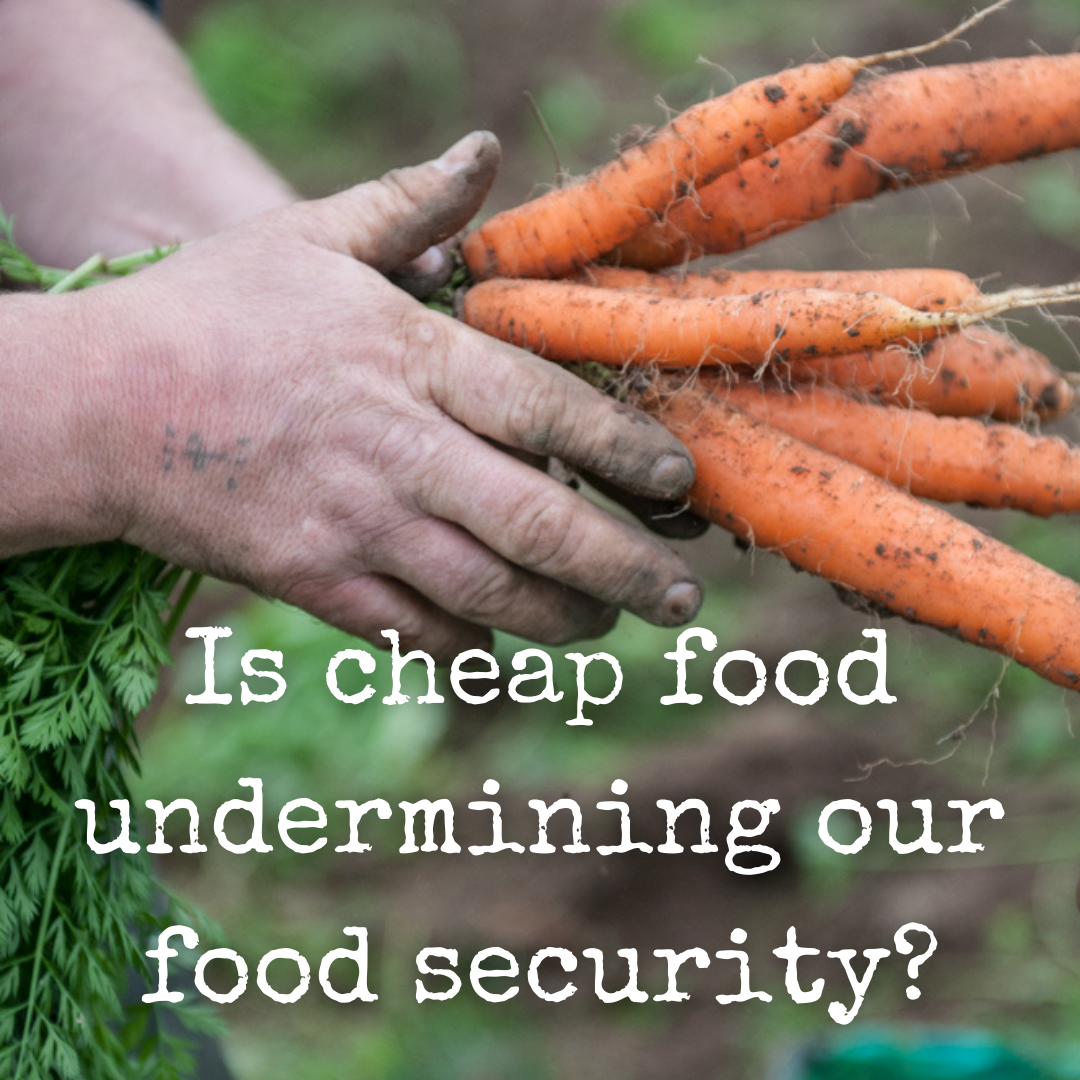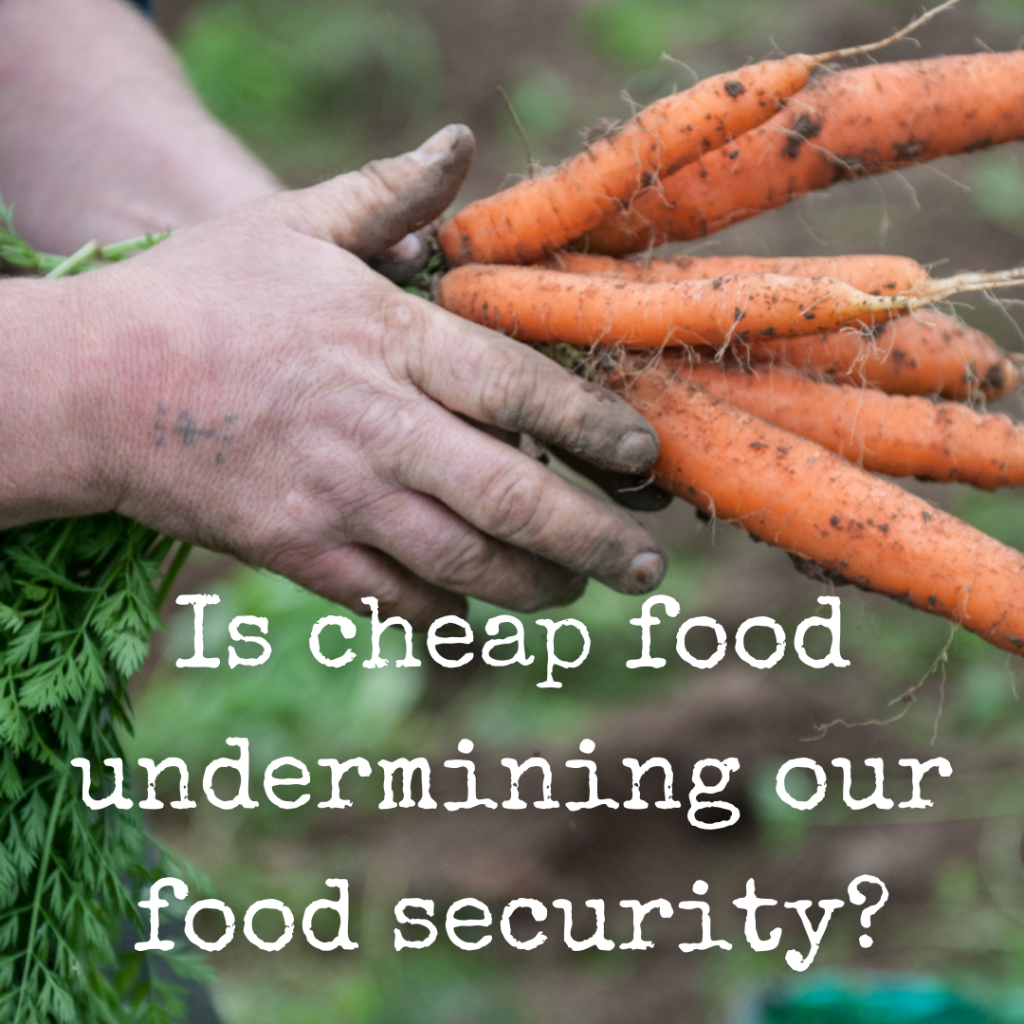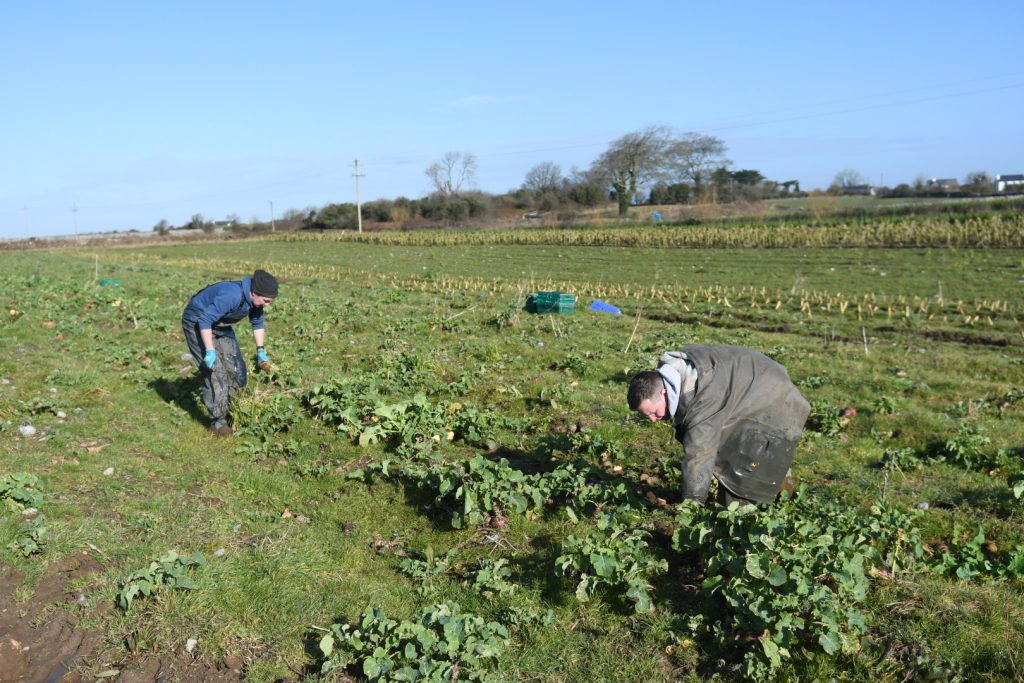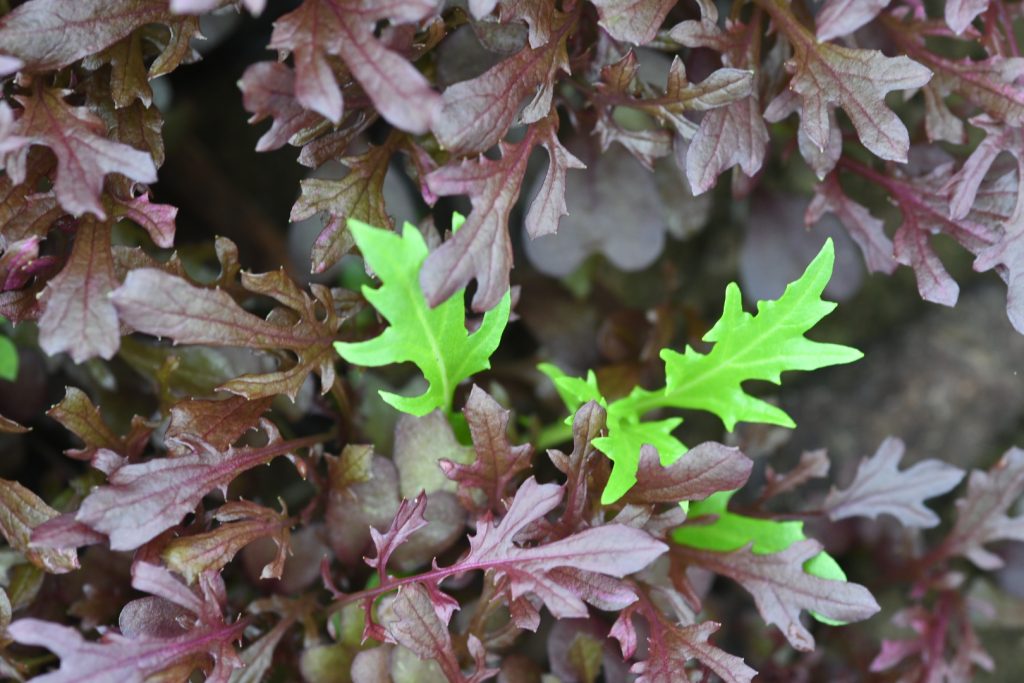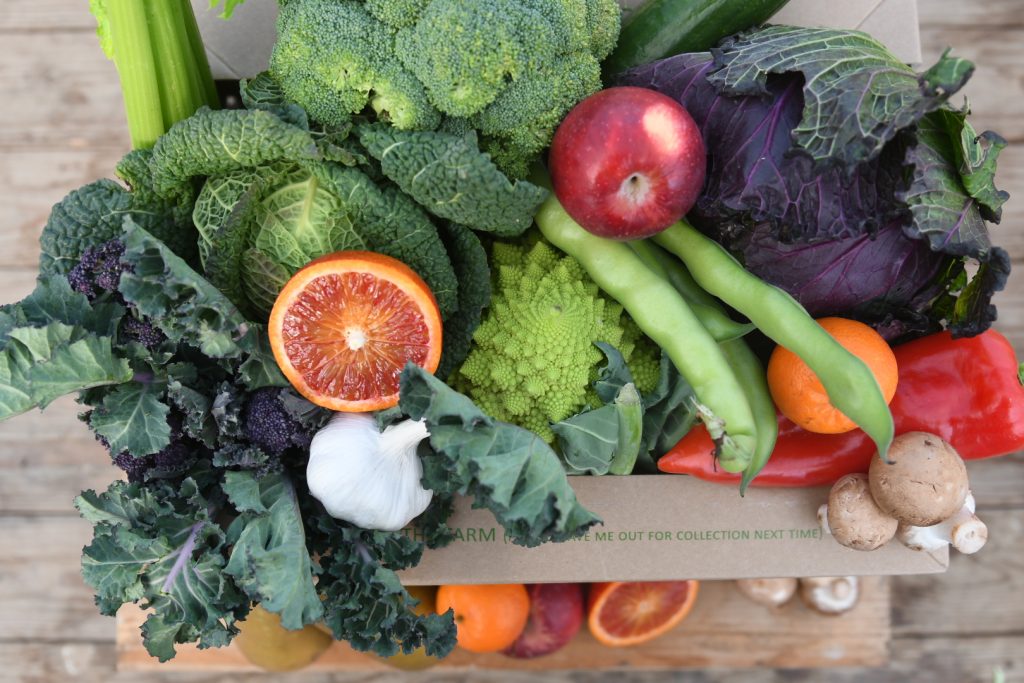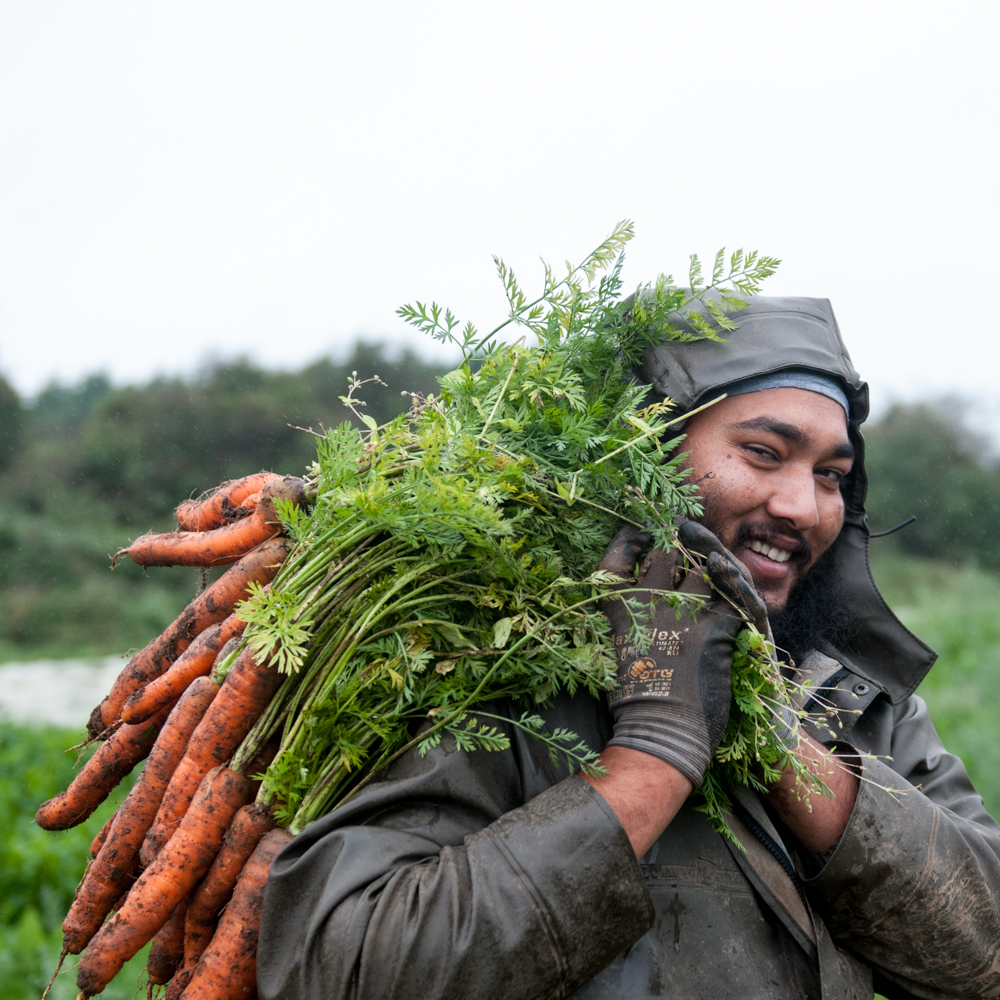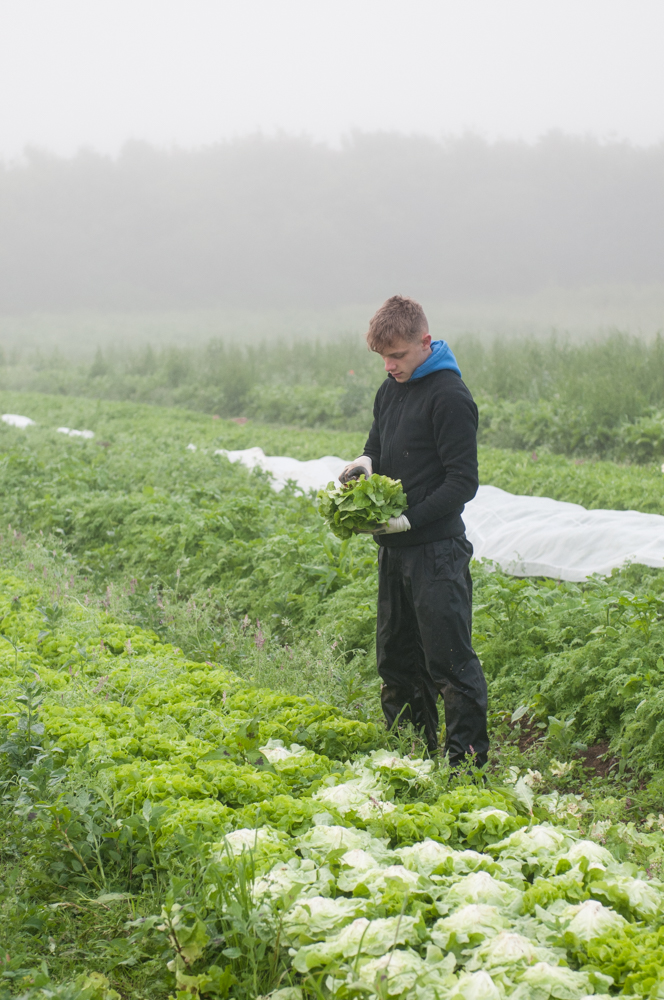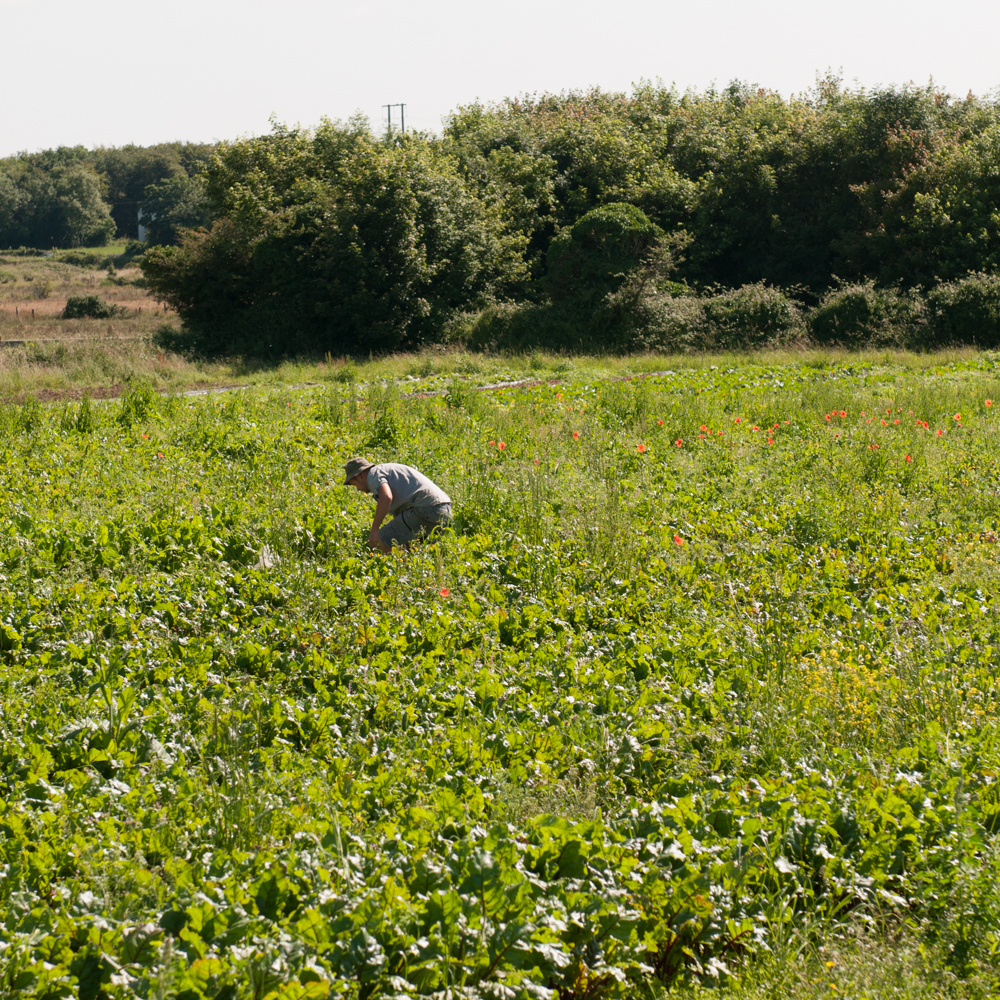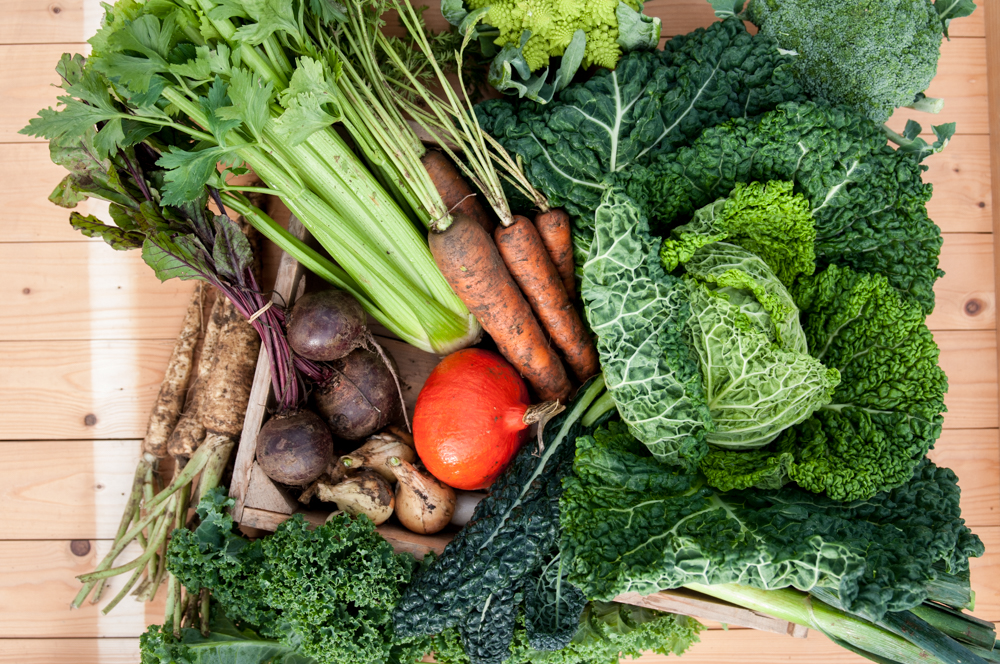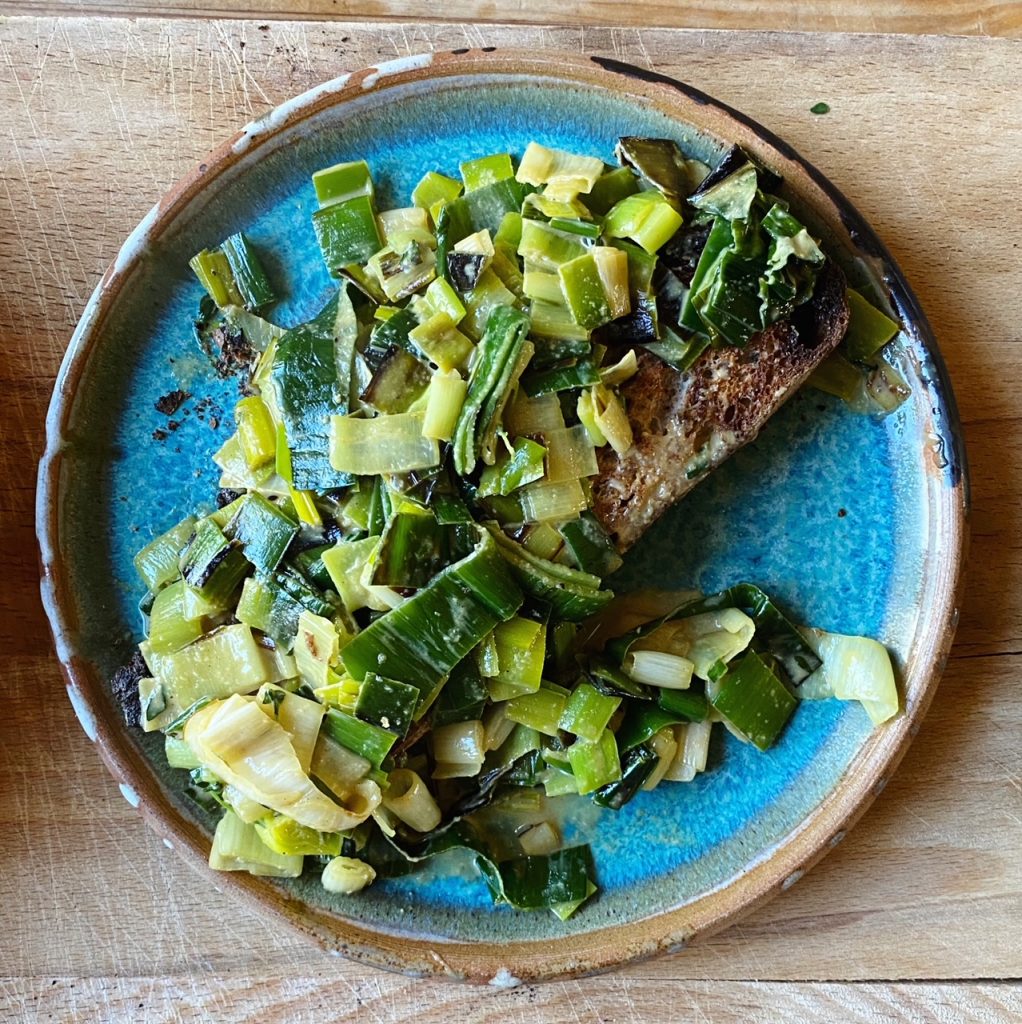
I don’t know about you, but for mid-week meals (or even manic weekend meals), I am always after something fast – but, it has to also be satisfying, healthy, affordable and delicious! This super simple supper ticks all the boxes. We have just completed a massive leek harvest and they are so sweet and delicious. Leeks have got to be one of the most underrated vegetables out there. They are exceptionally delicious when made the star of the show. Don’t just loose them in soups and stews, try them as the main ingredient.
Liz x
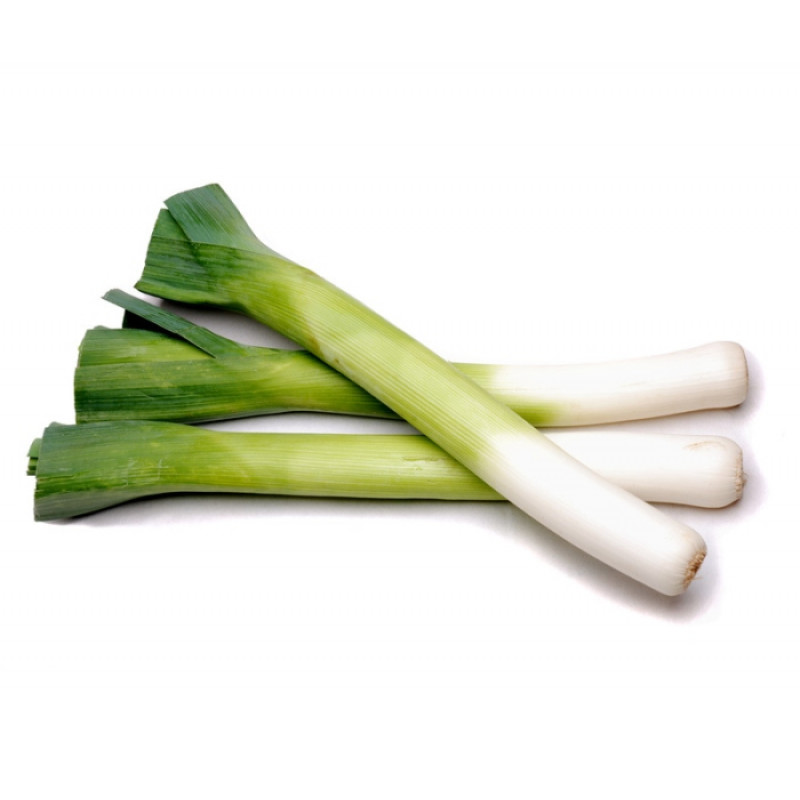
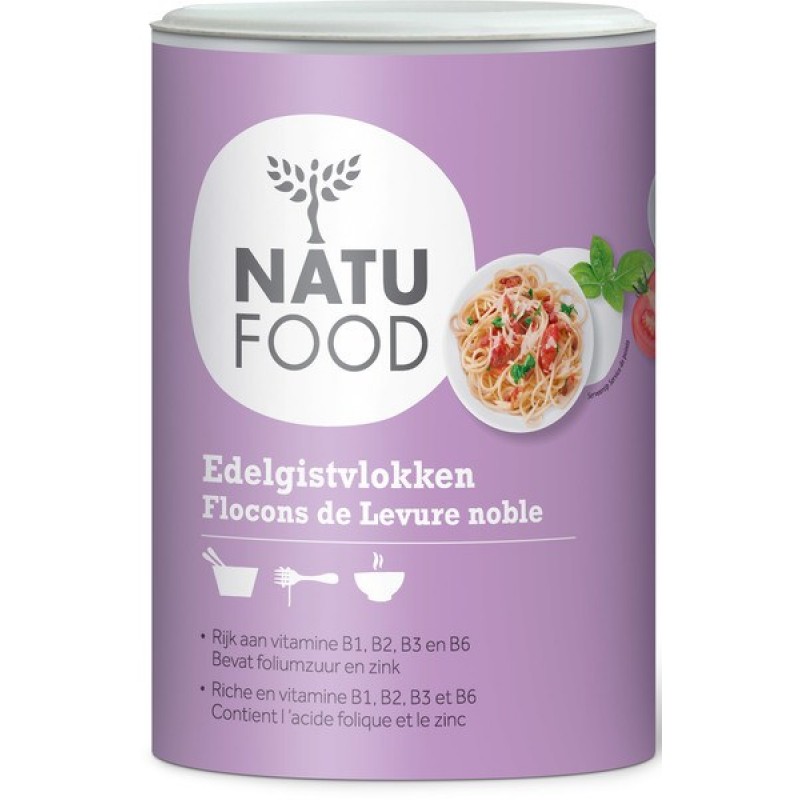
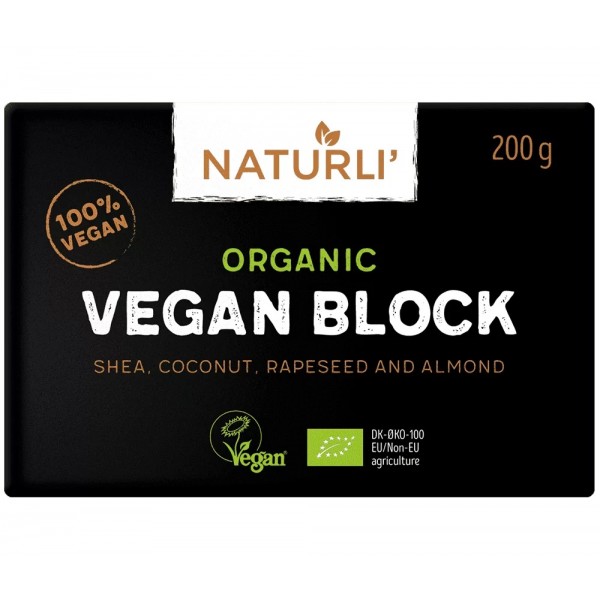
Ingredients (serves 2)
- 2 slices of sourdough bread
- 1 small clove of garlic
- 1 leek
- 1 tbsp butter (we use this vegan one)
- salt and pepper to taste
- a few sprigs of thyme
- a heaped tsp of mustard – Dijon or wholegrain…or any mustard you like
- a splash of milk (we use creamy oat milk)
- a handful of nutritional yeast flakes (or you can use grated cheese)
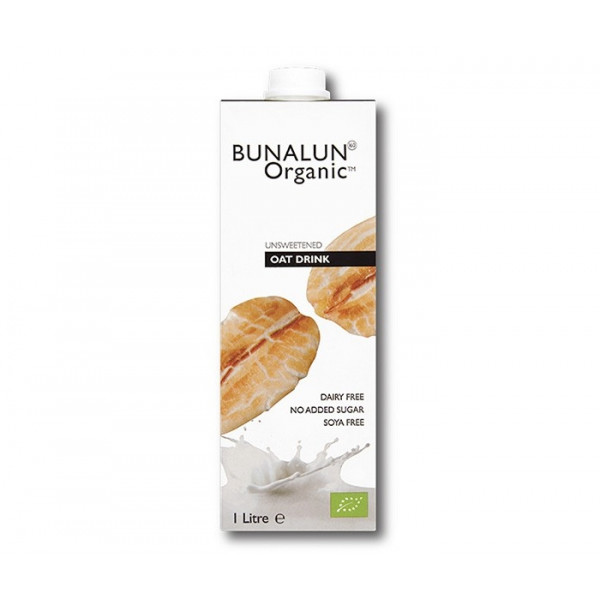
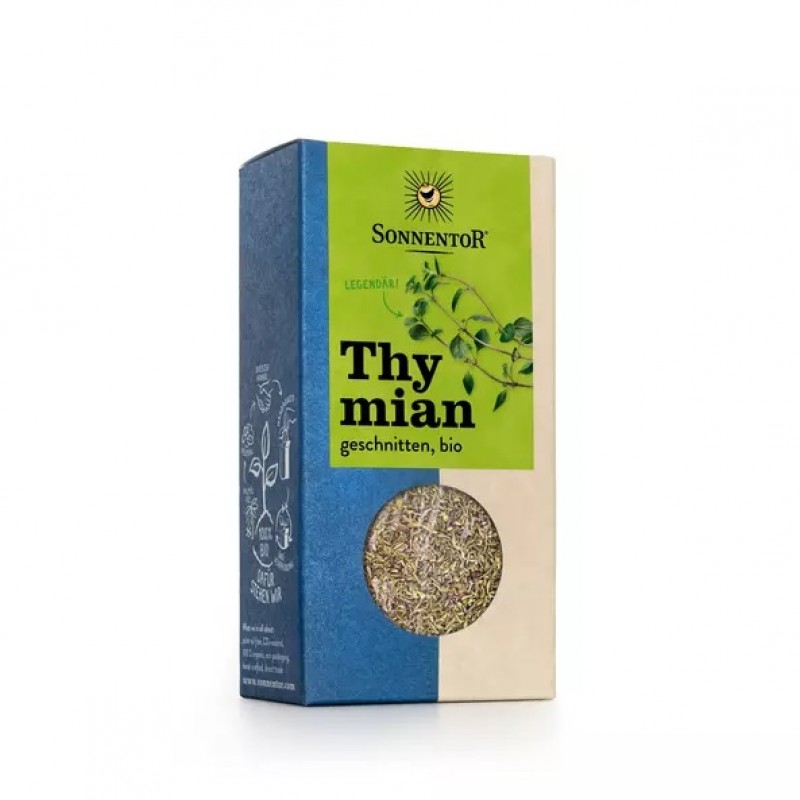
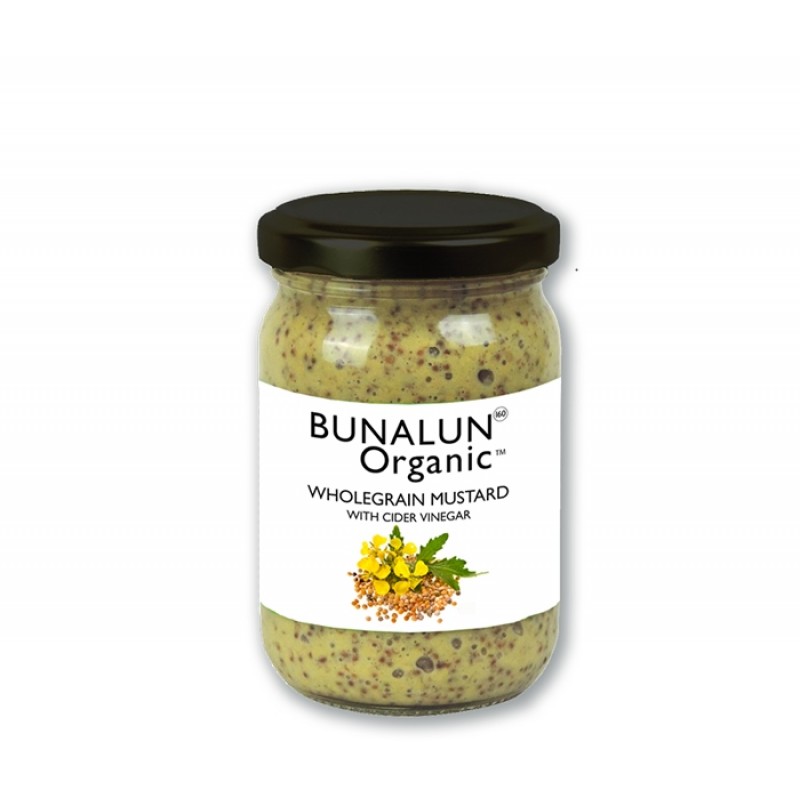
Method
- Toast the bread to your liking then peel the garlic clove and rub it over the toast on both sides.
- Slice the leek in half, lengthways, keeping the root end intact. Then rinse out the mud in the layers. Slice the very end off the leeks which will have dried out a bit, but keep as much as possible. The green part of the leek it just as delicious as the white – it just needs a touch longer cooking time. Then cut the leek into cm slices.
- Melt the butter in a wide pan over a medium-high heat. Then tip in the green bits of leek and stir fry for 3 minutes or so until they soften. Then add the rest of the chopped leek, some salt and pepper and stir fry again until the leeks start to collapse and colour lightly.
- Add the thyme, mustard, splash of milk and nutritional yeast (or cheese) and stir fry for another 3 minutes or so until you have a bubbly, silky mixture which can then be poured over the garlicky toast and devoured!
